List of 40 Famous Forests in India to visit
India has approximately 66% of the forest cover worldwide and is ranked among the top 10 countries globally. The country has many jungles and wildlife sanctuaries. This article will discuss state-wise national park name list, location, how to reach these beautiful forests, Timings, Entry Fees, Safari, the best time to visit, animals, areas, Things To Do, etc., for tourism.
Different types of forests in India are Tropical Evergreen Forests, Deciduous or Rain Forests, Dry Deciduous Forests, Mountain Forests, Tidal or Mangrove Forests, Semi-Desert and Desert vegetation, etc. The most significant percentage of Dry thorn and tropical deciduous forests is in Madhya Pradesh, Uttar Pradesh, Orissa, Chhattisgarh, etc.
Jim Corbett National Park, Kanha, Gir, Bandipur, Nagarhole, Namdapha, Wayanad Wildlife Sanctuary, etc., are the most famous forests in India.

State-Wise List of Top 40 Forest Names in India to Visit
List of 40 Best Forest Names in India
| No | Name | Place |
| 1 | Kaziranga National Park | Assam |
| 2 | Jim Corbett National Park | Uttarakhand |
| 3 | Ranthambore National Park | Rajasthan |
| 4 | Manas National Park | Assam |
| 5 | Dudhwa National Park | Uttar Pradesh |
| 6 | Nagarhole National Park | Karnataka |
| 7 | Pench National Park | Madhya Pradesh |
| 8 | Sanjay Gandhi National Park | Mumbai |
| 9 | Periyar National Park | Kerala |
| 10 | Eravikulam National Park | Kerala Munnar |
| 11 | Namdapha National Park | Arunachal Pradesh |
| 12 | The Great Himalayan National Park | Himachal Pradesh |
| 13 | Bhagwan Mahaveer Sanctuary | Goa |
| 14 | Sundarban National Park | West Bengal |
| 15 | Simlipal National Park | Orissa |
| 16 | Guindy National Park | Chennai |
| 17 | Bhitarkanika National Park | Odisha |
| 18 | Rajaji National Park | Uttarakhand |
| 19 | Panna National Park | Madhya Pradesh |
| 20 | Keibul Lamjao National Park | Manipur |
| 21 | Silent Valley National Park | Kerala |
| 22 | Sariska Tiger Reserve Alwar | Rajasthan |
| 23 | Pilibhit Tiger Reserve | Uttar Pradesh |
| 24 | Turahalli Forest | Bangalore |
| 25 | Dr Salim Ali Bird Sanctuary | Goa |
| 26 | Orang National Park | Guwahati |
| 27 | Khangchendzonga National Park | Sikkim |
| 28 | Bandipur Tiger Reserve | Bangalore |
| 29 | Buxa Tiger Reserve | West Bengal |
| 30 | Pobitora Wildlife Sanctuary | Assam |
| 31 | Coringa Wildlife Sanctuary | Andhra Pradesh |
| 32 | Wayanad Wildlife Sanctuary | Kerala |
| 33 | Parambikulam Tiger Reserve | Kerala |
| 34 | Kanha Tiger Reserve | Madhya Pradesh |
| 35 | Satpura Tiger Reserve | Madhya Pradesh |
| 36 | Chinnar Wildlife Sanctuary | Kerala |
| 37 | Gir National Park | Gujarat |
| 38 | Bhadra Wildlife Sanctuary | Karnataka |
| 39 | Sultanpur National Park | Haryana |
| 40 | Betla National Park | Jharkhand |
1. Kaziranga National Park, Assam
Kaziranga National Park is a UNESCO World Heritage Site established in 1985 in Assam. Karbi Anglong hills and the Brahmaputra river cover Kaziranga Rashtriya Udyan. It’s well known for its flora and fauna.
The site used to be a designated hunting spot during the British era. The government changed the status in 1905, and the park was named Kaziranga Wildlife Sanctuary. Four vegetation types can be seen in this vast area:
- Alluvial inundated grasslands
- Alluvial savanna woodlands
- Tropical moist mixed deciduous forests
- Tropical semi-evergreen forests
Trees found in Kaziranga National Park are Kumbhi, Indian gooseberry, cotton tree, elephant apple, sugarcane, spear grass, and elephant grass.
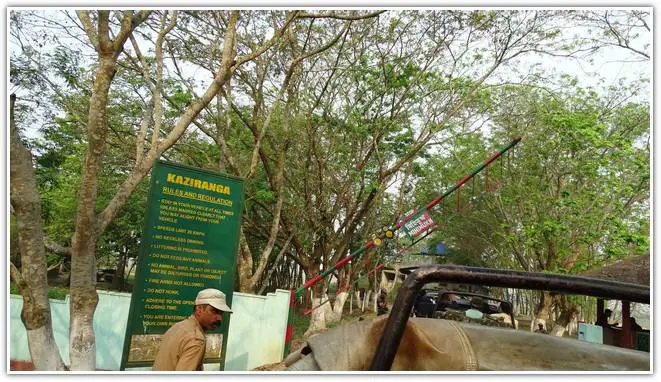
Where is Kaziranga National Park Located?
Kaziranga National Park, situated in Assam, spans over 430 square kilometres across the Golaghat, Karbi Anglong, and Nagaon districts.
How to reach Kaziranga National Park
Guwahati Airport is the nearest to Kaziranga National Park. Take a taxi to cover the remaining 295 km by road. Furkating Railway Station is at a distance of 80 km, so travelling by train is the most convenient option.
Kaziranga National Park visiting time.
The visiting time is every day from 7:30 am to 4:00 pm.
Kaziranga National Park’s famous animals
It’s a tiger reserve under the forest department of the Government of Assam. The forest has many Royal Bengal Tigers, and there are currently 118 tigers in total.
Kaziranga National Park is also famous for its one-horned rhinoceros. As per the latest census, 1,641 rhinos were found, and the number is almost two-thirds of the world’s entire one-horned rhino population.
Other animals like Hoolock Gibbon, Leopard, Indian Elephant, Sloth Bear, Wild water buffalo, deer, etc., are also found here. Kaziranga National Park is certified by BirdLife International as an Important Bird Area.
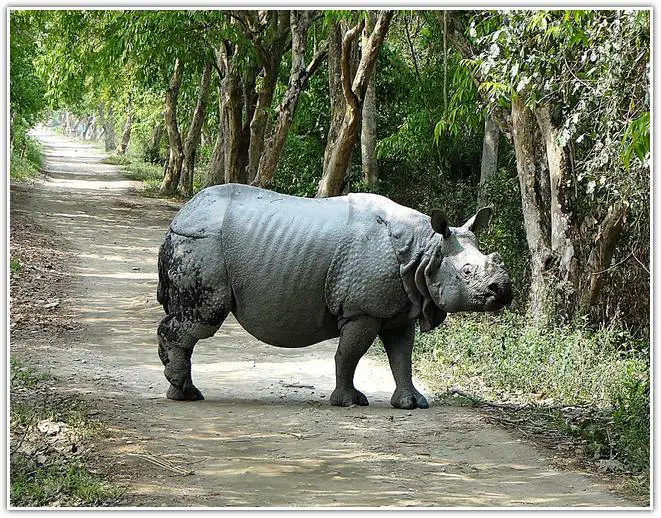
Best time to visit Kaziranga National Park
Kaziranga opens its gates for only six months, from November to early April. It’s the ideal time to visit; sometimes, the timing gets shorter because of heavy monsoons or other unfortunate events.
Things To Do In Kaziranga National Park
Kaziranga National Park has three entry points, and these gates are in separate districts. Book a jeep safari at any of these gates and tour the wild. You can also spend the night at a nearby hotel and witness the mystery of the forests.
Hotel in Kaziranga National Park
Lodging is available around the park. La Vue Resort and Kaziranga Guest House at Kohora are well-known hotels in this area. The hotel front desk usually provides information about safaris and other activities.

2. Jim Corbett National Park, Uttarakhand
Jim Corbett was a British hunter, naturalist, and author. He came to India as a colonel of the British Indian Army and was recognised as a hero by the Uttarakhand people for hunting down a man-eating tiger.
In his later years, he actively campaigned to conserve India’s wildlife. As a result, he established the oldest national park in India in 1936, later renamed the Jim Corbett National Park, and Jim Corbett became the First National Park of India.
The forest type is mainly moist deciduous with trees like Sal, Khair, and Sisso. In India, the highest density of tigers is found.
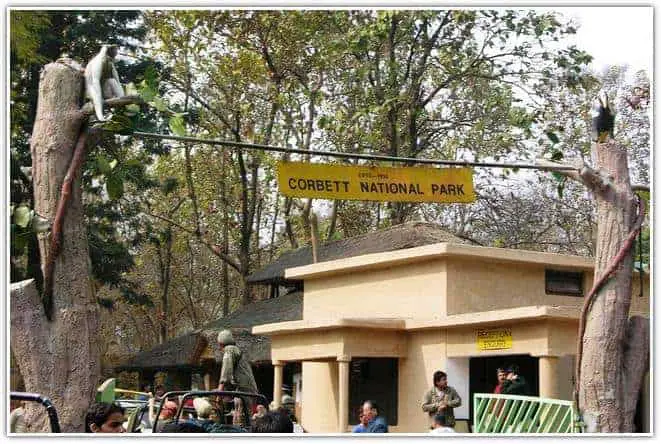
Where is Jim Corbett National Park Located
Jim Corbett National Park is in the Uttarakhand state’s Nainital and Pauri Garhwal districts, besides the Ramganga River. It covers an area of 520 sq km, coniferous and deciduous forest in the foothills of the Himalayas.
How to reach Jim Corbett National Park
The most convenient way is to drive from Delhi. Reaching the park from the nation’s capital takes six hours, and Ramnagar is the nearest railway station.
Read Best Amusement in EOD Adventure Park

Jim Corbett National Park Visiting Time
All days from 6:00 am to 5:30 pm.
Jim Corbett National Park is Famous for which Animal
Jim Corbett National Park is the earliest tiger reserve in India. They have an impressive population of 164 tigers and over 600 elephants.
Mountainous species such as Himalayan black bears, sloth-type deer, and deadly pythons are common animals of this reserve forest in India.

Best Time to Visit Jim Corbett National Park
The three seasons are best to visit Jim Corbett National Park: the Winter Season starts from October to February, the Monsoon from July to September, and the Summer Season from March to June. But the best time to visit is winter ( October to February). The park is open, and the weather is pleasant for exploring.
Things To Do In Jim Corbett National Park
There are many things to do in Jim Corbett National Park, like a Jeep safari, Mountain climbing, river rafting, bird watching, fishing, trekking, etc. There is also a museum and a waterfall within the sanctuary; visit them leisurely. Camping is allowed in certain areas.
Hotel in Jim Corbett National Park
Special government guest houses are inside the park. Hotels like Corbett Floresta and Corbett Castles are great tourist-friendly resorts beside the park.
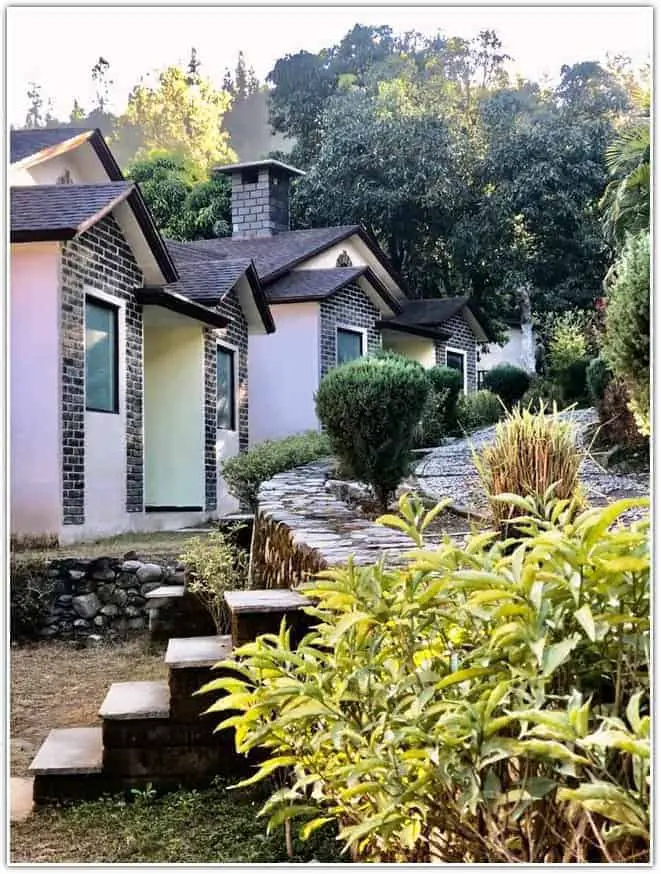
3. Ranthambore National Park, Rajasthan
Ranthambore National Park is amongst the few green areas of India’s desert state of Rajasthan. The forest is mainly grassland, and dry deciduous trees outnumber evergreen plants.
This famous jungle in India is named after the famous Ranthambore Fort. In 1955, it was first started as the Sawai Madhopur Game Sanctuary. Later, it joined Sawai Man Singh Sanctuary and Keladevi Sanctuary to form a tiger reserve of 1,334 sq km.
This national park has over 300 different types of plant species. The Ranthambore National Park, Rajasthan, trees are Dhok, Banyan, Pipal, Mango, Jamun, Neem, Ber, Babul, Gum, Gurjan, Khajur, Kadam, Khair, etc.
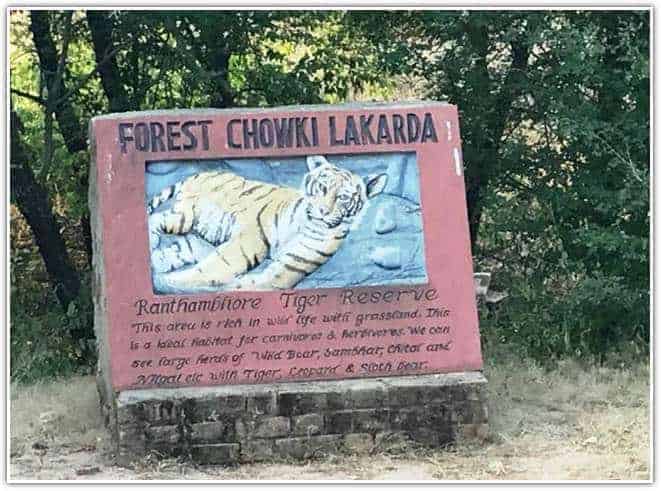
Where is Ranthambore National Park situated
Ranthambore National Park is in the Sawai Madhopur district of Rajasthan state. It covers an area of 1,334 sq km.
How to reach Ranthambore National Park
The nearest airport is in the state capital, Jaipur. Take a train to Sawai Madhopur station from any of the major cities of Rajasthan to reach Ranthambore.
Ranthambore National Park Visiting Time
The park is open daily from 6 am to 7 pm.
Ranthambore National Park is Famous for which Animal
Ranthambore is a tiger reserve. In 2013, there were 48 Royal Bengal Tigers here. Leopards, Striped Hyenas, Sambar deer, Chital, Nilgai, Langurs, Macaques, Jackals, Jungle cats, Caracals, Sloth bears, Blackbucks, Rufous-tailed Hare, Indian Wild Boar, Chinkara, etc. have inhabited this dry forest.
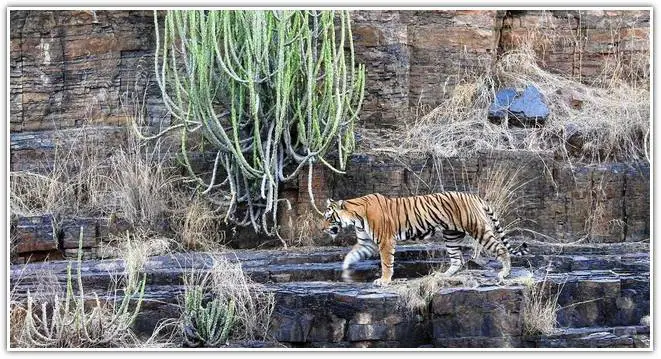
Best Time to Visit Ranthambore National Park
The park opens in October and remains open till June of next year. Winter is the best season to visit this forest, and Ranthambore National Park closes to visitors between July and September because of the monsoon season.
Things To Do In Ranthambore National Park
Ranthambore National Park’s Canter safari is the most sought-after activity, and Jeep safaris are available. Hike up to Ranthambore Fort to explore the wonders of history. Malik Lake is known for being a hotspot for bird watchers. Hot air balloon rides here allow you to see the entire desert forest.
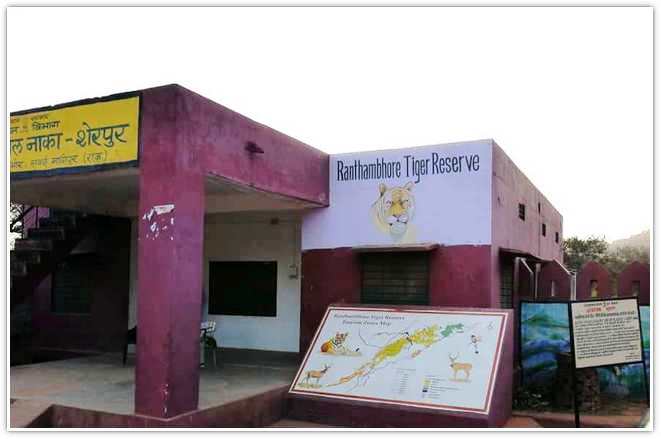
Hotel in Ranthambore National Park
Hotels like Forest View Resort and Vivanta Sawai Madhopur Lodge are outside the park boundary. You can see the forest view from your balcony in these accommodations, and many other such accommodations are available.
4. Manas National Park, Assam
Manas National Park is the only Biosphere reserve in North-East India, and UNESCO announced the national park as a World Heritage site for its rich biodiversity. The Manas National Park in Assam is a fantastic and dangerous forest in India.
It’s a semi-evergreen forest. The park stands first in housing the maximum number of endangered Indian animals. The name Manas is derived from the Manas River flowing within the woods.
In this national park, about 50% is grassland, and the rest of the forest is covered with Sub-Himalayan Light Alluvial Semi-Evergreen forests and Low Alluvial Savanna Woodland.
It has over 500 different types of tree species. Flora of Manas National Park includes Burflower-tree, Syzygium Formosum, Java Plum, Indian bay leaf, Aphanamixis polystachya or the pithraj tree, Bauhinia purpurea (purple bauhinia), Kamala tree, etc.
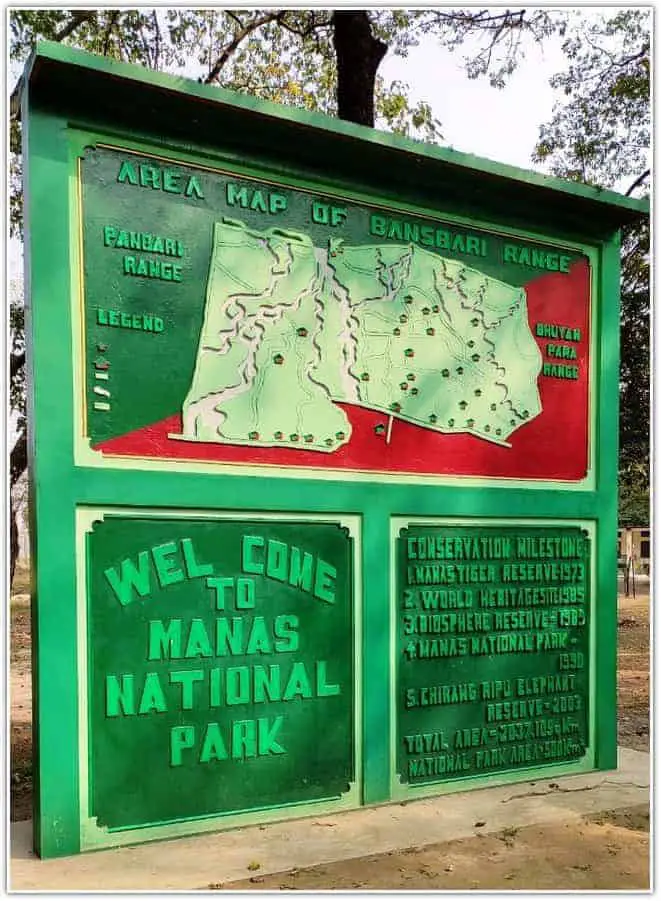
Which state is Manas National Park located in?
Manas National Park covers an area of 950 sq km and is situated in the Himalayan foothill region, spanning six districts of Assam. These districts are Kokrajhar, Bongaigaon, Barpeta, Malaria, Kamrup, and Darrang in Assam.
How to reach Manas National Park
Both the airport and the railway are far away from Manas National Park. Barpeta Road Railway Station is the nearest, and Guwahati Airport is the closest, 137 km away.
Manas National Park Visiting Time
The park is open daily during peak season from 6 am to 3 pm.
Manas National Park is Famous for Which Animal
Fifty-five species of mammals are there, of which 31 are endangered, and it’s declared an elephant reserve. Other animals include rhinoceros, clouded leopards, sloth bears, tigers, wild water buffalo, pygmy hogs, hispid hares, golden langurs, etc.
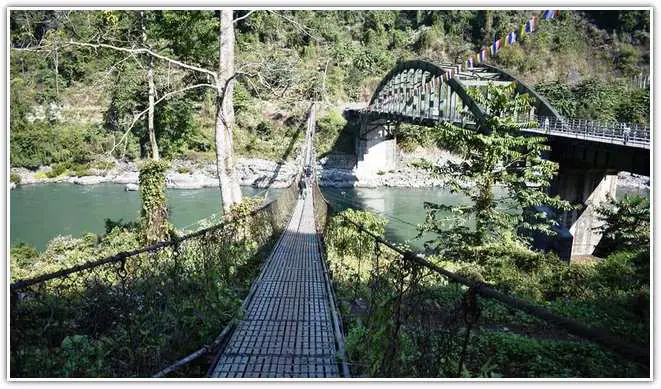
Best Time to Visit Manas National Park
Manas National Park is accessible from November to April. Throughout this period, it has good visiting conditions. Avoid visits during rain.
Things To Do In Manas National Park
Safaris in jeeps are available. Elephant safaris are a unique activity here. Apart from that, tourists can do river rafting and bird-watching here.
Hotel in Manas National Park
A few hotels are immediately beside the forest, 10 km from the park. The place also has a few homestays; Saroni Homestay is one example.
5. Dudhwa National Park, Uttar Pradesh
The Dudhwa National Park is an essential forest in Uttar Pradesh, India, at the Indo-Nepal border. In 1958, the extensive dense forest was recognised as a wildlife sanctuary.
The great Indian conservationist Billy Arjan Singh worked tirelessly to change the status to a national park in 1977. Ten years later, the forest was marked as a tiger reserve zone. It’s also known for its rare and diverse Terai ecosystem.
The Dudhwa forest is a marsh, grassland, and dense woods. The flora of this national park includes Sal, Sehore, Shisham, Asna, Jamun, Gular, and Bahera. It’s known for ‘Sal’ trees globally.
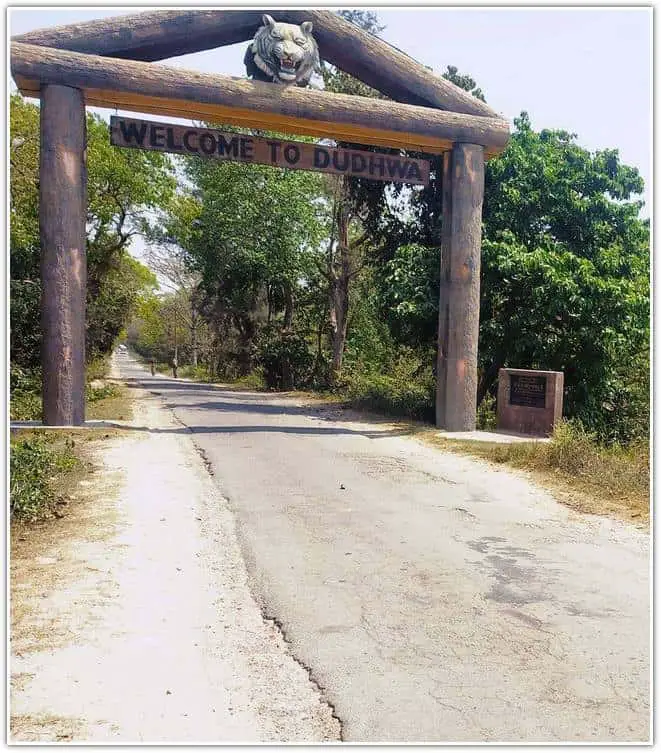
Where is Dudhwa National Park Located
Dudhwa National Park, situated in the Lakhimpur Kheri District of Uttar Pradesh, India, spans over 1,270 square kilometres.
How to reach Dudhwa National Park
The best option to reach Dudhwa National Park is by train. The Dudhwa Railway Station is only 4 km from the national park, and the nearest airport is Lucknow, 187 km from the forest.
Dudhwa National Park Visiting Time
It’s open every week from 6:30 am to 5:30 pm, and the park remains closed from 10:30 am to 2:30 pm.
Dudhwa National Park is Famous for Which Animal
At present, it’s a tiger reserve, but it used to be a protective area for swamp deer. These two are the park’s major attractions, and a scarce animal called the Hispid Hare has been seen here.
This animal was rediscovered here in 1984 after it was declared extinct years before. Other animals include rhinoceros, swamp deer, elephant, sambar, hog deer, cheetal, langur, blue bull, mug, and gharial crocodile. A wide variety of birds is found here.
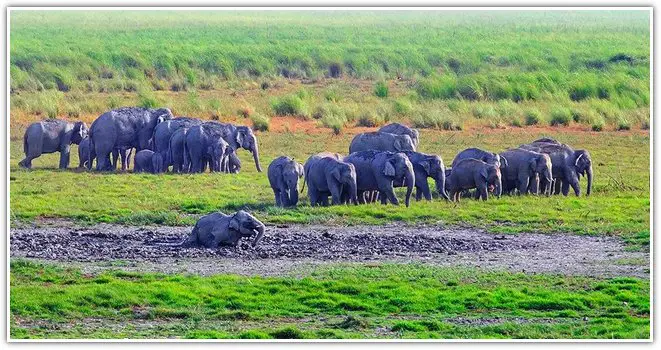
Best Time to Visit Dudhwa National Park
The park is open only for seven months, from mid-November to mid-June. The best time to visit will be from February to April, as animals can be seen adequately.
Things To Do In Dudhwa National Park
The primary activity for this place is a jungle safari to see the animals. You can also go bird watching near the tall, bushy trees. This place also offers exciting elephant rides for visitors.
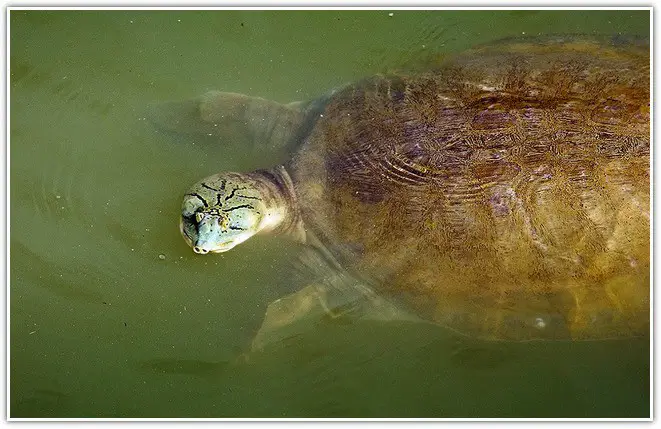
Hotel in Dudhwa National Park
Hotels and homestays like Jungle Holidays offer a great forest view from the balcony. You can experience the wilderness of forests at night from the comfort of your room.
6. Nagarhole National Park and Tiger Reserve, Karnataka
Rajiv Gandhi National Park, famous as Nagarhole National Park, Karnataka, has India’s unique and diverse forest ecosystems. It’s a part of the Nilgiri Biosphere Reserve and exists on the slopes of the Brahmagiri Mountains.
Mainly, it is a deciduous forest with abundant expensive trees like teak, rosewood, and sandalwood. It’s currently under consideration for a UNESCO World Heritage Site.
The sanctuary is covered with lush green forests and dense vegetation. The plant species commercially found here are rosewood, sandalwood, teak, silver oak, crocodile bark, Indian kino tree, Kadam, cotton tree, etc.
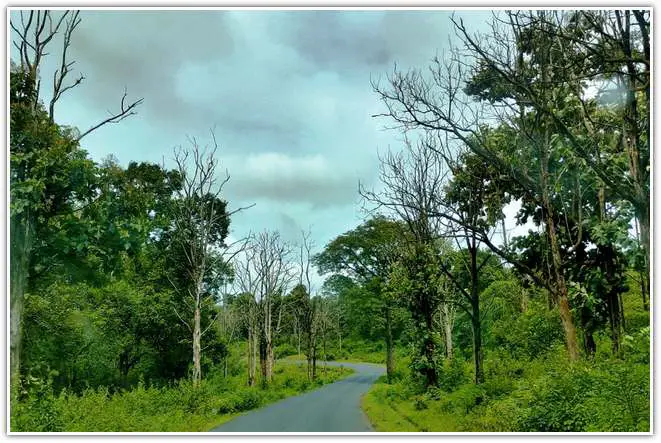
Where is Nagarhole National Park Located
Nagarhole National Park, located in Kodagu and Mysore districts in Karnataka state, covers an area of 642.4 sq km.
How to Reach Nagarhole National Park
Mysore Junction is 89 km from Nagarhole, and the nearest airport is Bangalore Airport. Bangalore to Nagarhole National Park’s distance is 223 km via the NH275 road. Both national and international flights land here. The best option will be to take a train to Mysore and drive the rest of the way. Coorg/ Madikeri to Nagarhole National Park is 124.4 km through NH275.
Nagarhole National Park Visiting Time
It is open all day from 6 am to 5 pm.
Nagarhole National Park is Famous for Which Animal
In 1999, Nagarhole was declared a tiger reserve. It’s home to the Royal Bengal tiger, Wild Dogs, Leopards, Bears, deer, pangolins, and different species of birds.

Best Time to Visit Nagarhole National Park
The park is open to visitors throughout the year. The best time to plan a trip will be from April to May. The summer heat dries up the waterholes. As a result, the animals come out to drink water from the lake. Thus, witnessing as many animals as possible is an excellent opportunity.
Things To Do In Nagarhole National Park
Nagarhole’s wildlife safari is counted among the best wildlife tours in South India. It showcases authentic flora and fauna native to peninsular India. Bird watching is another sought-after activity.
Nagarhole National Park Safari
The Forest Department conducts wildlife safari twice a day, and the timings are from 6 am to 8 am and 3 pm to 5 pm. The cost of a safari per adult Indian is 350 rupees, and for foreigners, it’s 500 rupees. Students and children below 12 need to pay 150 rupees for a safari.
Hotel in Nagarhole National Park
Hotel Madikeri Heritage and Imarat Hotel are good to stay within 1 km of the national park. Other hotels, forest lodges, and homestays are also available nearby.
7. Pench National Park, Madhya Pradesh
Pench National Park of central India is a Tiger Reserve established in 1975, located in the Seoni and Chhindwara districts in Madhya Pradesh and Maharashtra state. The forest is notably known for being the setting of Rudyard Kipling’s world-famous novel The Jungle Book. The forest has dry and moist deciduous trees; hence, it’s mixed.
Thus, a part of this jungle is named the Mowgli Pench Sanctuary. The park is named after the Pench River and has different fruit trees, medicinal trees, and plants. The Flora are Sal Tree, Mahua Tree, Palash Tree, Teak tree, Neem tree, etc.
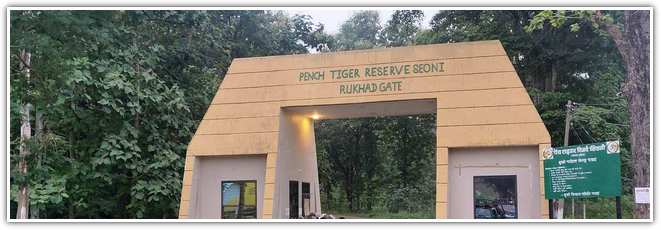
Which state is Pench National Park located in?
Pench National Park, located in Madhya Pradesh near Seoni, spans 257.3 square kilometres. Madhya Pradesh has the largest forest area, stretching to the Satpura Range.
How to reach Pench National Park
Nagpur and Jabalpur are the closest cities to the national park. The journey takes 3 to 4 hours, and no direct route from Mumbai exists.
Pench National Park Visiting Time
The park is open every week from 10:00 am to 5:20 pm.
Pench National Park is Famous for Which Animal
The latest census showed that there are currently 40 tigers in the park. Other animal species include nilgai, wild boar, jackal, Indian leopard, wolf, chital deer, sambar deer, and more than 200 species of migratory birds.

Best Time to Visit Pench National Park
Pench National Park is open from 1st October till the end of June next year, and it remains closed during the monsoon. The best time to visit is winter when the weather is most pleasant. So, plan your visit between November to February.
Things To Do In Pench National Park
Pench is an activity-filled place. First off, there is the jungle safari. Bird watching is also suitable for certain times of the year. There are hiking and cycling trails around the buffer zones for tourists to explore nature independently.
Hotel in Pench National Park
Travellers can find lodgings near the park. Venn Life Forest Resort, Beyond Stay Mahua Vann Pench, etc., offer a full forest view from their balconies or terraces.
8. Sanjay Gandhi National Park, Mumbai
Right in the centre of India, we have Sanjay Gandhi National Park. The park records about 2 million visitors yearly and is Named after our late Prime Minister. The Kanheri Caves in the centre of the park have a long history. These were built during the 9th B.C.E. and are now essential centres of Buddhist history.
The national park belongs to the Malabar Plains ecosystem, which has varied vegetation, including semi-evergreen, scrub, deciduous, etc.
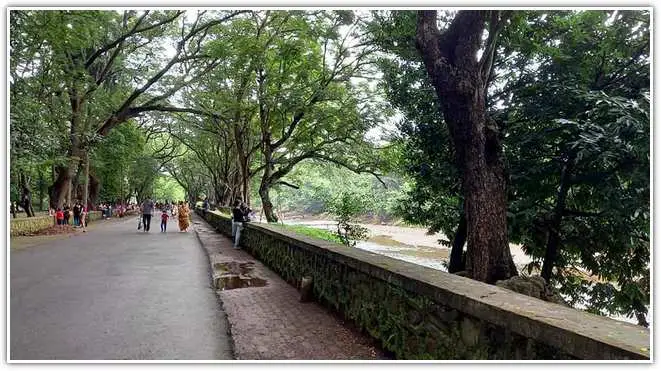
Where is the Sanjay Gandhi National Park Located
Sanjay Gandhi National Park in the metropolitan city of Mumbai in Maharashtra covers an area of 87 sq km.
How to reach Sanjay Gandhi National Park
Sanjay Gandhi National Park’s distance from Borivali station is 1.2 km, and from Thane is 23.4 km. If arriving by car, take the Western Express Highway to the main gate.
Sanjay Gandhi National Park Visiting Time
The park remains closed on Mondays. The rest of the week, it opens for morning walkers at 5:30 am and general tourists at 9 am. The gates close at 6 pm.
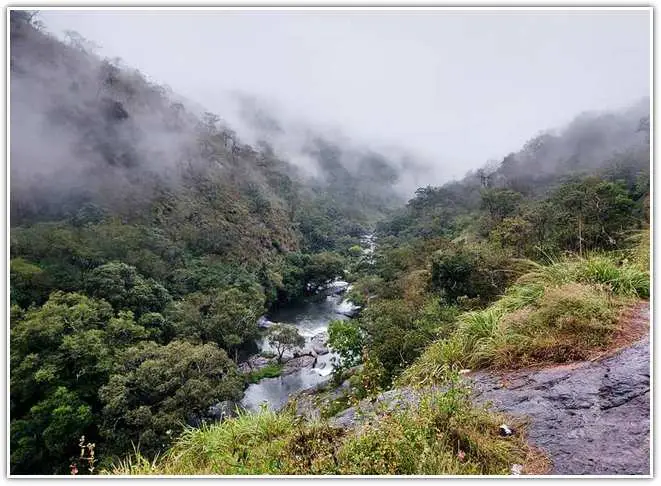
Sanjay Gandhi National Park is Famous for Which Animal
Chital deer and leopard are the main mammals here. Other mammals include Black-naped Hares, Barking deer, striped Hyenas, Civets, Four-horned Antelopes, Mouse Deer, and Monkeys.
Reptiles like crocodiles, pythons, and other poisonous snakes can also be seen. The park is also well known for its butterfly preservation, and more than 170 butterfly species have been identified as endemic to this area.
Best Time to Visit Sanjay Gandhi National Park
Mumbai is hot during the summers, and tourists can explore the park best in the winter. The time between September to March is ideal for visiting this lovely place.
What to see in Sanjay Gandhi National Park
In Sanjay Gandhi National Park, Mumbai, Maharashtra, 1300 plant species are found. Maharashtra has the densest forests in India.
Activities include wildlife safari, recreational boating, trekking, a mini toy train tour, Van Rani, and cycling through the forests. Visiting the historical Kanheri Caves is necessary when visiting the Sanjay Gandhi National Park.
Trees are Silk plants, the Tectona, Firmiana, Tropical almond, Holarrhena, Dalbergia, etc.
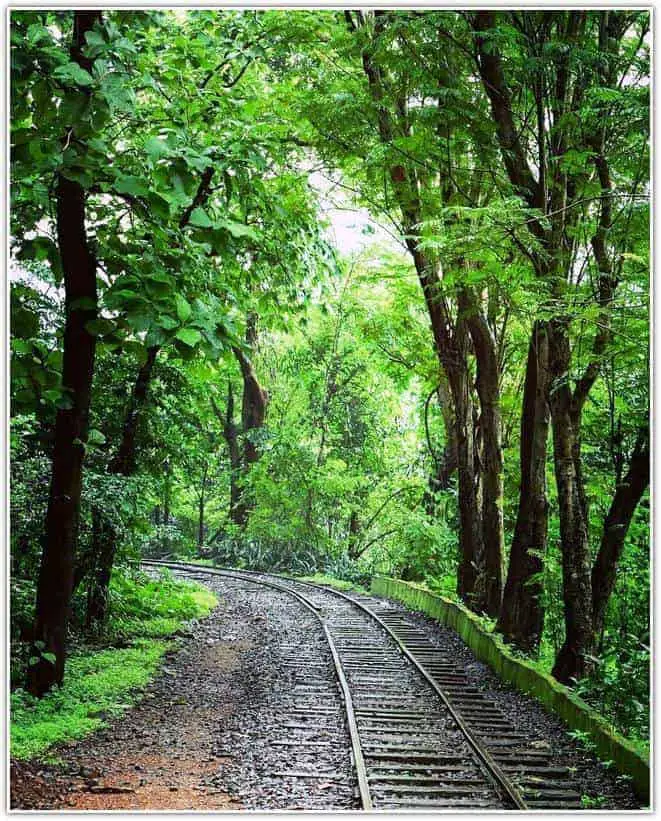
Hotel in Sanjay Gandhi National Park
As the national park exists in a metropolitan city, there is no shortage of hotel options here. Sri Krishna Paradise and Hotel Lotus Residency are just a few examples.
9. Periyar National Park, Kerala
Periyar National Park is an elephant and tiger reserve in the Cardamom Hills of South India. It’s a montane forest comprising tropical evergreen and deciduous trees, and vast grasslands.
The forest type is moist deciduous. The Maharaja of the region established this park in 1934 as Nelliyampathy Game Sanctuary, and after Independence, the government changed the present name.
Flora of Periyar National Park, Kerala is Vateria indica, Dipterocarpus indicus, Cullenia excelsa, Palaquium ellipticum (Dalzell), Artocarpus hirsutus, Bombax ceiba, Hopea parviflora, etc.
Where is Periyar National Park Located
Periyar National Park is spread across the districts of Idukki and Pathanamthitta in Kerala and spans over 350 square kilometres. It’s situated between Madurai in the south, the Western Ghats mountain range, along the hills of Cardamom of Pandalam.
How to reach Periyar National Park
The best option for travelling to Periyar is by road, which is connected to all major cities in Kerala. The nearest Madurai airport is 140 km away, while the nearest railway station, Kottayam, is 110 km away.
Periyar National Park Visiting Time
Open all day from 6 am to 7 pm.
Periyar National Park is Famous for which Animal
Asian elephants and the royal Bengal tiger are the two main animals protected here. Thirty-three more species of mammals are recorded here. Gaur, Panther, Sambar, Barking Deer, Nilgiri langur, Lion Tailed macaque, Otter, Malabar giant squirrel, and Wild dog are other mammals of this region. Migrating birds can also be seen here.
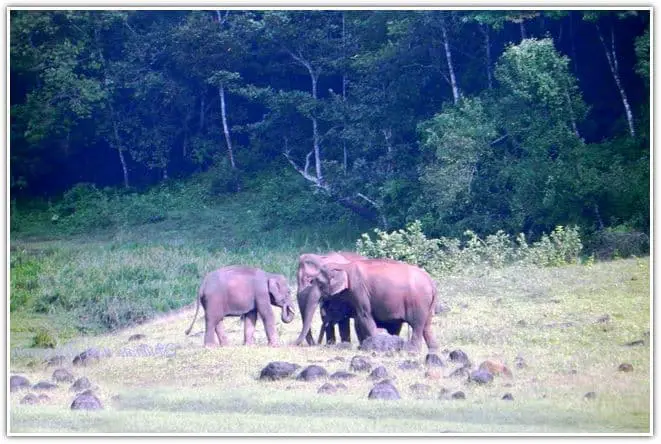
Best Time to Visit Periyar National Park
October to March are the ideal time to visit Periyar. It’s right after the monsoon, so there is no occasional rainfall, and the temperature is also low.
Things To Do In Periyar Tiger Reserve
While all forests are known for their jeep safari, Periyar attracts tourists through a boat safari. The boat safari provides excellent views of nature, and Jeep and elephant safaris are also available.
Hotel in Periyar National Park
Hotels are mostly available at Thekkady. Stay at L&G Riverview Haven to get a perfect forest view from your room.
10. Eravikulam National Park Munnar Kerala
Eravikulam National Park is the first national park in Kerala, established in 1975. Grasslands and deciduous trees cover the majority of the area.
The chief portion of the forest is on a hilly plateau of the Western Ghats at an elevation of 2000 m. Anamudi, the highest peak in South India, is inside this park.
Eravikulam National Park, Kerala, is divided into forest, shrubland, and grassland. The antibacterial plant Eupatorium glandulosum, also known as Common boneset, is found here.
Other plant species are Actinodaphne bourdilloni, Syzygium densiflorum, Microtropis ramiflora, Pittosporum tetraspermum, Syzygium aronottianum, Tripogon bromoides, Chrysopogon Zelanieus, Eupatorium adenophorum, Strobilanthus Kunthianus (Neela Kurinji), Eulalia phaeothrix, Arundinella fuscata, Cyanotis Species, etc.
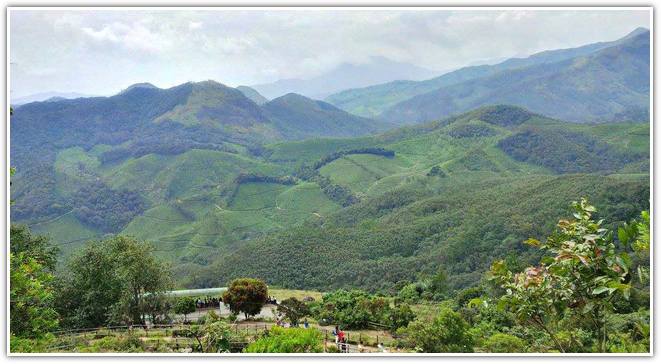
Where is Eravikulam National Park Located
Eravikulam National Park Neelakurinji covers an area of 97 sq km in the Idukki and Ernakulam districts of Kerala.
How to reach Eravikulam National Park
Munnar to Eravikulam National Park is 16 min (7.6 km) through Udumalpet Road. Public transport systems are available. The nearest airport is Ernakulam Airport, and the Aluva railway station is the closest train stop.
Eravikulam National Park Timings
The gates open for visitors every day from 8:30 am to 4:30 pm.
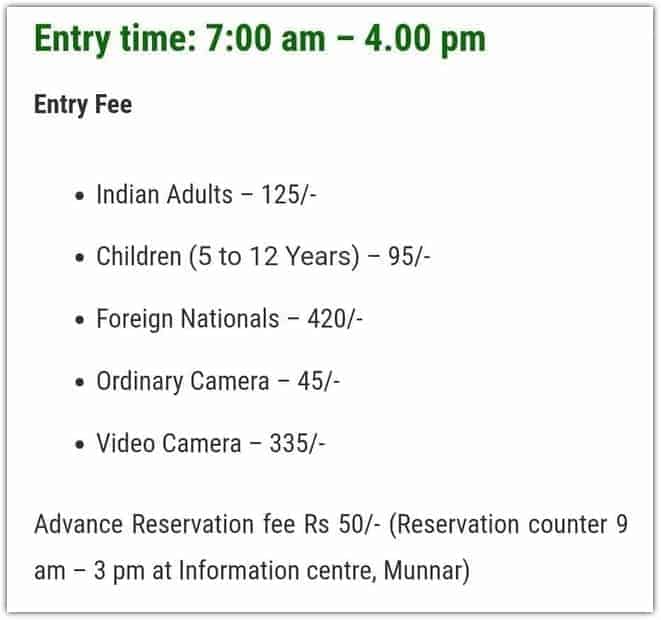
Eravikulam National Park is Famous for which Animal
The sanctuary is mainly famous for preserving the Nilgiri tahr, an endangered mountain goat endemic to southern India. Other animals include sambar deer, jackal, wild dog, dhole, leopard, etc.
Best Time to Visit Eravikulam National Park
November to May is the ideal time to visit this park; it’s the dry season, and you can easily spot animals.
Things To Do In Eravikulam National Park
The entire Western Ghats region is a well-known trekking area. The hills here are home to unique vegetation. Thus, many educational camps are held here to spread knowledge of nature. Wildlife safari is also available.

Eravikulam National Park Safari
Jeep safari is not available here, and no cars are allowed inside. The only way to explore the forest is on foot.
Hotel in Eravikulam National Park
Most of the hotels are located in and around Munnar. Minister’s Mansion and Deshadan Eco Valley Resort are two such resorts.
11. Namdapha National Park, Arunachal Pradesh
In Namdapha National Park in Arunachal Pradesh, almost 150 timber species are found. Pinus Merkusi, Abies delavayi, Blue Vanda, and rare orchid species are also found here.
Namdapha, or water from Dapha Bum glacier, is a thorny tropical rainforest in northeast India. The vegetation varies from evergreen to deciduous and alpine due to altitude differences.
It’s also the world’s northernmost rainforest at 27° N latitude.
The park is listed among the 36 biodiversity hotspots of the world, and Area-wise, it comes fourth among all the national parks of India.
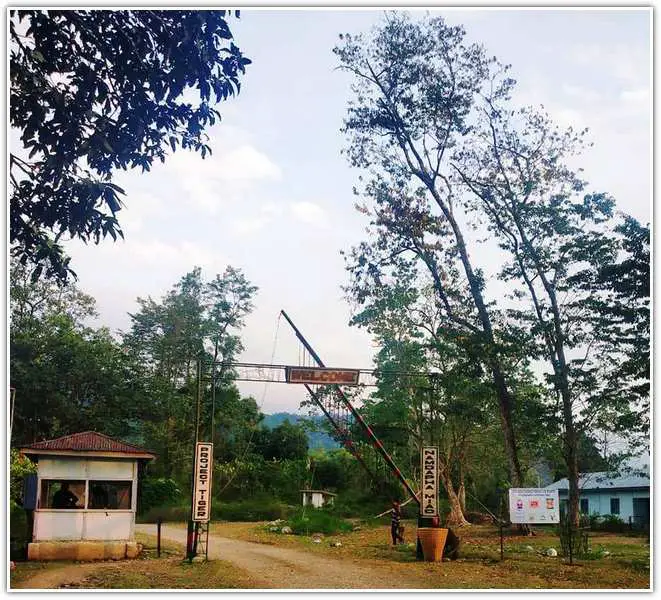
Where is Namdapha National Park Located
Namdapha National Park, situated in Changlang District of Arunachal Pradesh, spans over 1,985 square kilometres between the Dapha Bum range of the Mishmi Hills and the Patkai range. The Noa-Dihing River and the Brahmaputra River flow through this park. The park is spread across Mizoram, Manipur, and Myanmar’s neighbouring regions.
How to reach Namdapha National Park
The nearest airport is at Tezu, 104 km away, and Dangari Railway Station is the closest train stop. Since roads are well-connected to the place, driving or public transport is preferable for visitors.
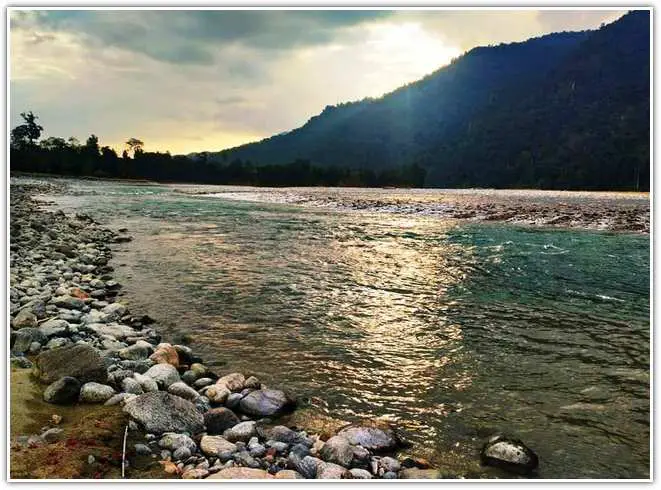
Namdapha National Park Visiting Time
The park is open all seven days from 10 am to 8:30 pm.
Namdapha National Park is Famous for Which Animal
The park is a biodiversity hotspot. It has various rare species of animals, and the Namdapha flying squirrel is an endangered animal endemic to this national park.
It’s also the only forest in the world with all four species of big cats: Tiger, Leopard, Snow Leopard, and Clouded Leopard.
Best Time to Visit Namdapha National Park
October to March is the best time to visit Namdapha National Park, and the weather is pleasant enough for forest exploration.
Things To Do In Namdapha National Park
Visitors here can usually tour the park in two ways: Elephant safari or trekking. Both have their separate fixed routes, but are entertaining nonetheless. Boating is also an activity available here. Lastly, you can visit the Miao Museum and the Zoological Park to learn more about the area.
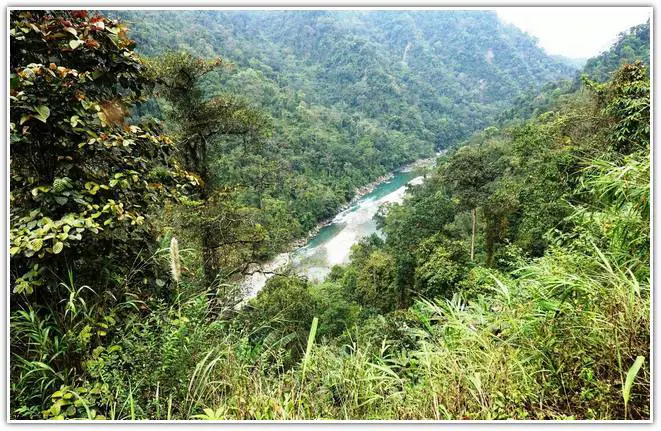
Hotel in Namdapha National Park
There are several camp sites within the forest area. Stay in one of these to have a great experience. Accommodation is not that easy to spot here. However, Deban Forest Rest House and a few government guest houses exist for visitors to spend the night.
12. The Great Himalayan National Park, Himachal Pradesh
The Great Himalayan National Park in Himachal Pradesh has over 100 species of vegetation and medicinal plants. The flora of this forest includes blue pine, oak trees, Rhododendron trees, cedar, Deodar, spruce, etc.
This National Park is a UNESCO World Heritage Site at the foot of the Himalayan mountains in northern India. The park was formed in 1984 and gained its world heritage status in 2014. It has various forest types, among which thick clusters of alpine and coniferous vegetation can often be seen.
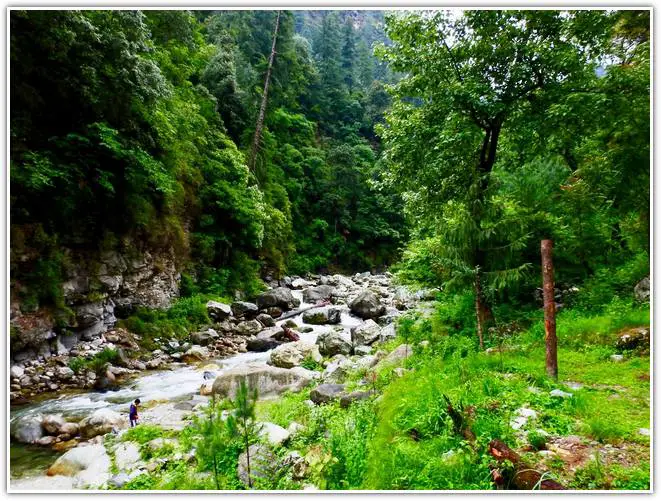
Where is the Great Himalayan National Park situated
Great Himalayan National Park in the Kullu district of Himachal Pradesh covers an area of 1171 sq km.
How to reach the Great Himalayan National Park
Bhuntar is the nearest airport, 60 km away, and Joginder Nagar Railway Station is the closest train station, 140 km away. Both the station and the airport are well connected to Delhi. Book a car to cover the remaining distance.
Great Himalayan National Park Visiting Time
Open all year round from 10 am to 5 pm.
Great Himalayan National Park is Famous for Which Animal
The Great Himalayan National Park is mainly famous for Western Tragopan and has the world’s largest population of this extremely rare pheasant. Other animals include snow leopards, Himalayan Musk Deer, Blue Sheep, Himalayan Tahr, Himalayan black bears, etc.
Best Time to Visit the Great Himalayan National Park
The forest remains open throughout the year, but April-May is the best time to visit. It’s spring, so nature is at its best, and animals start coming out after the cold winter.
Great Himalayan National Park trek
GHMP Trek is very popular in the Himalayan region, and the famous Sanjh Valley trek route goes through this forest. The trek costs around 12000 to 15000 rupees per person. Bird watching is an everyday activity due to the vast number of migratory birds here. Some locals and tourists also enjoy trout fishing in the park’s water bodies.
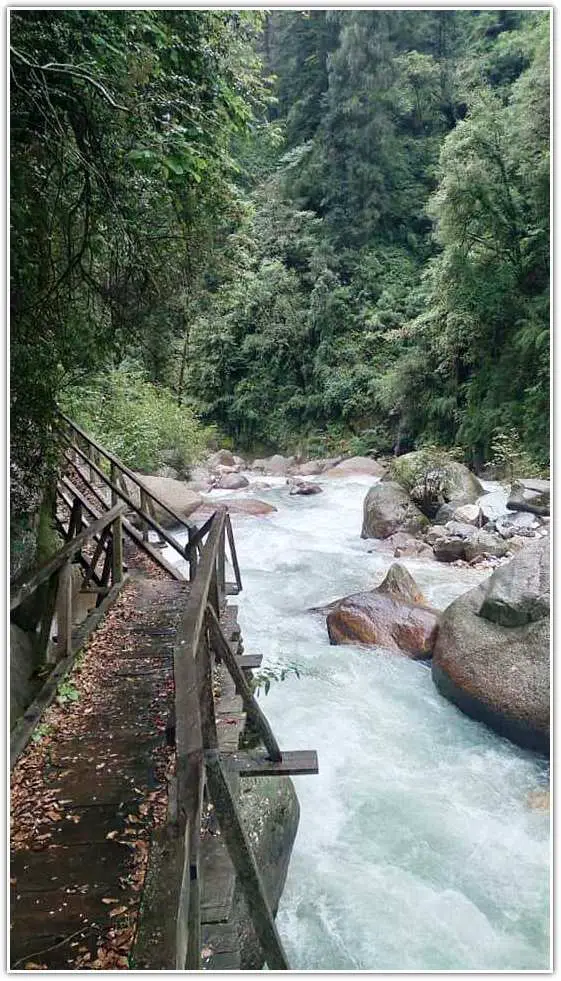
Hotel in Great Himalayan National Park
Accommodation is available around the jungle. There are a few hotels, homestays, etc., where you can stay. Within the wilderness, forest department rest houses and bungalows are found.
13. Bhagwan Mahaveer Sanctuary and Mollem National Park, Goa
The Bhagwan Mahaveer Sanctuary and Mollem National Park in Goa showcase more than 700 flower plant species. Trees are found in this national park: Tropical almonds, Xylia, Crepe myrtle, Dalbergia(timber trees), etc.
It’s another protected forest within the dense greenery of the Western Ghats, also known as the Bhagwan Mahavir National Park. The famous Dudhsagar Falls lie here.
The forest shows vibrant tropical evergreen vegetation. Recently, the “Save Mollem” movement has gained momentum nationwide, and Naturalists are trying to revoke government orders to clear forest areas for railway construction.
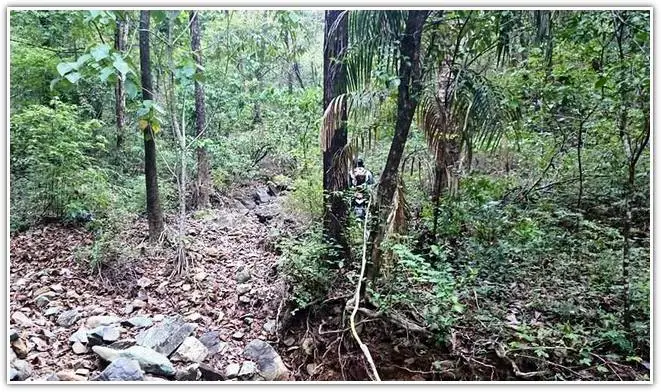
Where is Mollem National Park Located
Bhagwan Mahaveer Sanctuary and Mollem National Park in Goa span 107 square kilometres. It forms the border between the states of Karnataka and Goa.
How to reach Mollem National Park or Bhagwan Mahaveer Wildlife Sanctuary
The nearest airport is Goa International Airport at Panaji, 70 km away, and Collem Railway Station, 6 km away.
Mollem National Park Visiting Time
Open all days from 9 am to 5 pm. Ticket counters close at 3 pm.
Mollem National Park is Famous for Which Animal
Among herbivores, various types of deer and Gaur are spotted here. Carnivores include tigers, black leopards, panthers, etc.
Best Time to Visit Mollem National Park
The ideal time of visit will be from October to March.
Things To Do In Mollem National Park
Hiking and bird watching are famous here. Tourists hike their way up to the Dudhsagar Falls.
Mollem National Park Safari
A jeep service will take you to the Dudhsagar waterfall from Goa. Private vehicles are also allowed inside.

Hotel in Mollem National Park
Mollem town has several hotels. Dudhsagar Farmstay and Jungle Book Resort are some hotels that give you the jungle vibes.
14. Sundarban National Park, West Bengal
Sundarban National Park is spread across the largest delta of the world, formed by the river Ganga. It’s a biosphere reserve mainly known for the impressive population of the Royal Bengal Tigers. The vegetation type is a marshy littoral forest.
The area is filled with mangrove trees, forming the world’s largest mangrove belt. The region gets its name from a particular mangrove tree named Sundari, which was declared a UNESCO World Heritage site in 1987.
Sundarbans National Park, West Bengal, is a saltwater mixed forest with limited plant species. Sundarbans is named after the Sundari tree. In the woods, we can see different mangroves like Avicennia, Xylocarpus granatum (cannonball mangrove), Sonneratia apetala, Bruguiera gymnorhiza (orange mangrove or oriental mangrove), Ceriops decandra, Golpati, Champa, Dhundul, Genwa, and Hatal, etc.
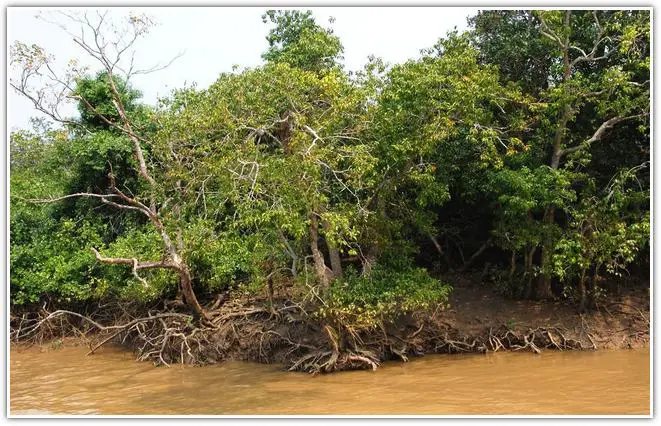
Where is Sundarban National Park Located
Sundarban National Park, situated in the South 24 Parganas district of West Bengal, spans 1,330 square kilometres. Another part of Sundarban is in Bangladesh.
How to reach Sundarban National Park
Netaji Subhas Chandra Bose International Airport in Kolkata is the nearest airport. It takes 3 hours to reach Sundarban National Park by car, and the Canning Railway Station is the closest train station.
Sundarban National Park Visiting Time
The sanctuary is open in daylight, from 8 am to 6 pm, and all boats can do the safari on all days.
Sundarban National Park is Famous for Which Animal
Sundarban National Park’s Royal Bengal tiger population is more than 400. Other animals are foxes, leopards, deer, wild cats, etc. Some endangered species of this region are saltwater crocodiles, river terrapin, olive ridley turtles, Hawksbill turtles, and mangrove horseshoe crabs.
Best Time to Visit Sundarban National Park
The summer and monsoon are inconvenient for visiting purposes, and the best time to see it is between October and March.
Things To Do In Sundarban National Park
Visit the Sajnekhali or Netidhopani watchtower to catch a glimpse of a tiger. Since it’s a delta region, Burirdabri Cage Trail is famous for its mud-filled path. Tourists experience visiting the mangrove forest via a boat safari. To see the rare olive ridley turtle, visit the Kanak Sanctuary, which is known for breeding them.
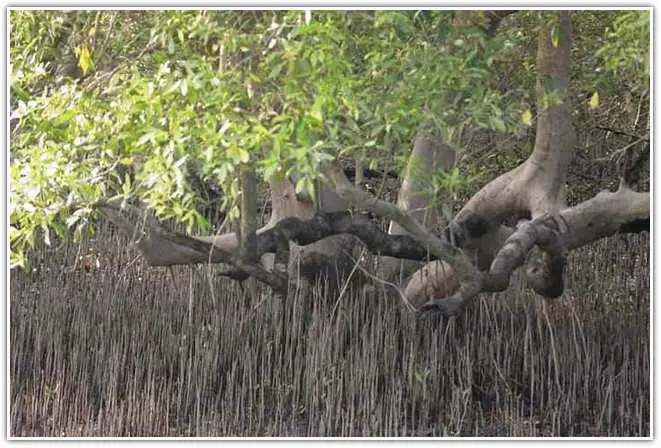
Hotel in Sundarban National Park
Sunderban in West Bengal is mainly known for its overnight boat tours. Most tourists stay in these boats to feel the eeriness of the wild at night. Several hotels are available on the islands, like Sundarban Tiger Roar Resort in Purbadulki and The Earthen Retreat Sundarban in Jharkhali.
15. Simlipal National Park Orissa
Simlipal National Park is the 7th largest national park in India. Similipal Tiger Reserve, Hadgarh Wildlife Sanctuary, and Kuldiha Wildlife Sanctuary make up this moist deciduous forest.
The sanctuary was a royal hunting ground until 1956, when it became a tiger reserve. In 2009, UNESCO added Simlipal National Park to its list of Biosphere Reserves. The forest is named after this area’s Simul or red silk cotton trees.
Simlipal National Park, Orissa, is a treasure house of over 1000 tree species. In this forest, almost 75% of the area is covered with Sal trees, and in the rest of the national park, we can find Khair, Sissoo, red silk cotton trees, bamboo, etc.
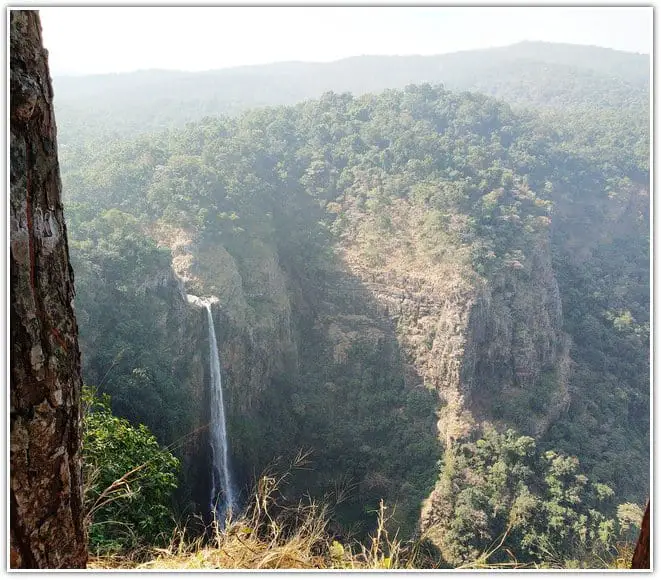
Where is Simlipal National Park Located
Simlipal National Park, situated in the Mayurbhanj district of Orissa, covers an area of 2,750 sq km.
How to reach Simlipal National Park
The nearest airport is the state capital, Bhubaneswar, 270 km away. Balasore is the closest railway station to Simlipal.
Simlipal National Park Visiting Time
You must obtain a special permit to enter Simlipal from the Jashipur or Pithabata tourist permit-granting centre. Reach the entrance by 7 am to get a formal tour.
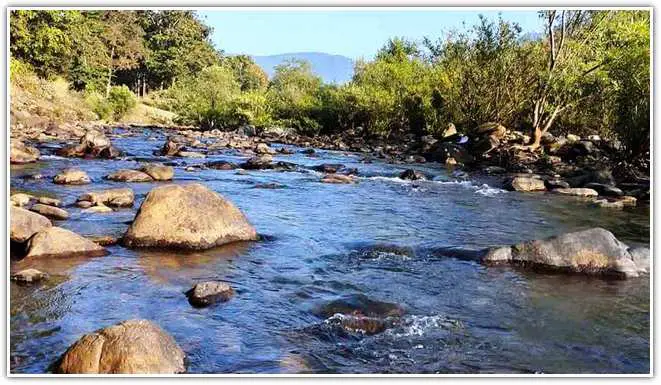
Simlipal National Park is Famous for Which Animal
Simlipal is mainly known for its tigers and Asian elephants. Chausingha, an antelope from the Indian subcontinent, is also found here. Other animals include deer, leopard, elephant, bison, bear, langur, and Otter.
Best Time to Visit Simlipal National Park
Simlipal is best during the winters, and October to May is the best time to visit.
Things To Do In Simlipal National Park
The forest department here provides safari rides in jeeps, and tourists can also go forward in their own cars and enjoy the wild. Trekking is a sought-after activity here; several trek routes take you around the forest.
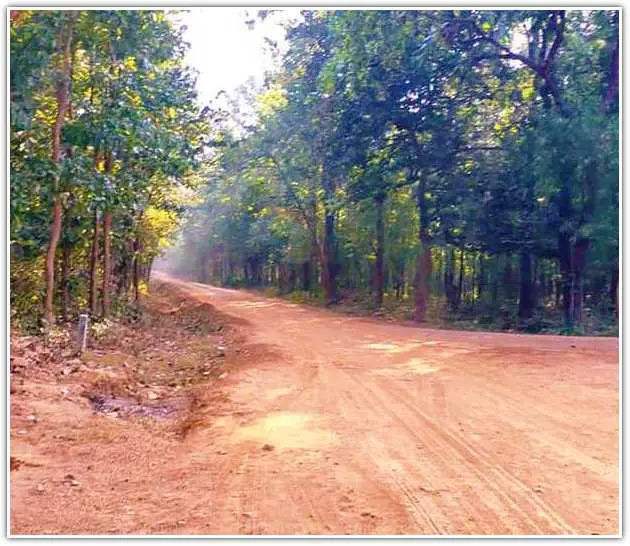
Resorts in Simlipal National Park
Few government guest houses are available in and around the forest gates. Hotels are mostly available in Baripada.
16. Guindy National Park, Chennai
Guindy National Park is India’s 8th smallest National Park, with 1.04 square kilometres of area. It’s a dry, evergreen forest dominated by scrub and thorns.
Initially, the forest was a vast game reserve. After turning into a Reserve Forest, most of the land was assigned for building institutions like Raj Bhavan, IIT Chennai, memorials, etc. Snake Park and a Children’s Park are also inside the National Park.
The Guindy National Park in Chennai showcases more than 350 plant species. Trees found in this national park include sugar apple, Atlantia monophylla, wood-apple, neem, etc. The forest is an extension of the Guindy House grounds, the residence of the Governor of Tamil Nadu.
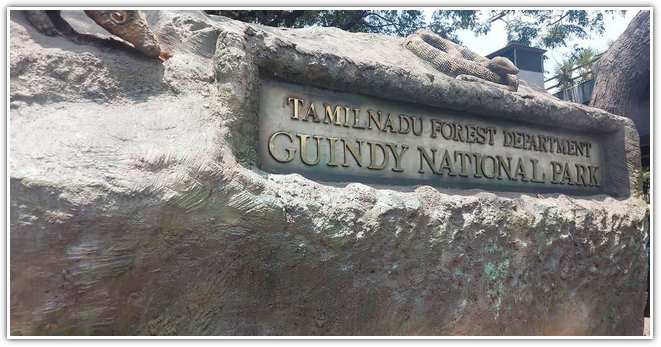
Where is Guindy National Park Located
Guindy National Park, situated in Tamil Nadu within the metropolitan city of Chennai, spans 2,706 square kilometres.
How to reach Guindy National Park
The best possible way to reach Guindy National Park is by road. Chennai has well-connected roads, and public buses can also take you to the park gates. Chennai Airport is 10.2 km away from here. The nearest rail station is Guindy Station, 1 km away.
Guindy National Park timings and holidays
It’s open every week from 9 am to 5:30 pm. The park is closed on public holidays.
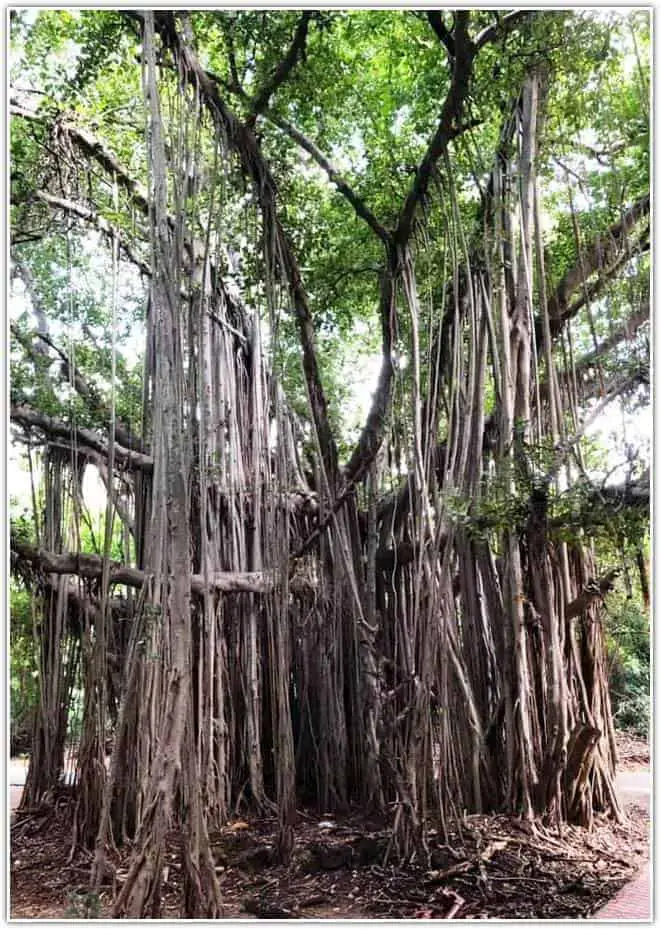
Guindy National Park is Famous for Which Animal
Fourteen mammal species exist here. Blackbuck, Hyena, Hedgehog, Common Mongoose, Otter, Pangolin, etc., are most famous among tourists. Like the black-naped hare, many exclusive rats and rodents are also found. The endangered Blackbuck is the main animal of Guindy National Park.
Best Time to Visit Guindy National Park
The best time to visit Guindy National Park is during the cold months of November to February.
Things To Do In Guindy National Park
Visit this national park with your friends and family to explore nature. Drop in at the snake park to see different varieties of these marvellous reptiles. After the day’s trip, cool off at the Children’s Park.
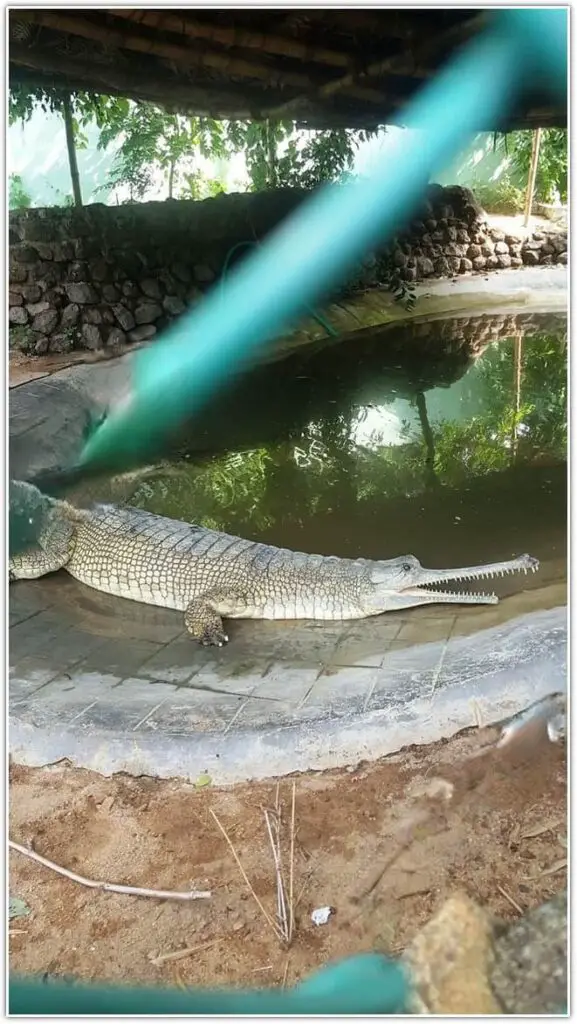
Hotel in Guindy National Park
As the park is inside a city, plenty of hotels are there. Taz Kamar Family Hotel, Irish Suites and Spa are famous hotels here.
17. Bhitarkanika National Park, Odisha
Bhitarkanika National Park is another mangrove national park in India apart from the Sunderban, surrounded by the Brahmani River. Previously, it was the hunting ground for the royal family. The park is mainly a swampland area on one side, along with the Gahirmatha Beach and Marine Sanctuary.
Bhitarkanika National Park, Odisha, is a treasure house of tree and mangrove species, including Heritiera fomes, Excoecaria agallocha, Avicennia officinalis, Ceriops decandra, casuarina, palm, coconut, etc.
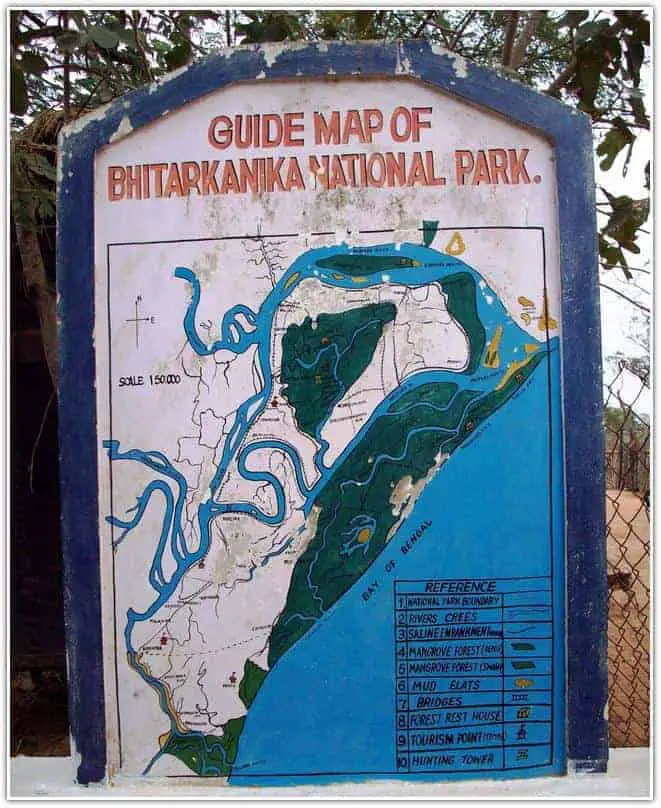
Where is Bhitarkanika National Park Located
Bhitarkanika National Park in the Kendrapara district of Odisha covers an area of 145 sq km.
How to visit Bhitarkanika National Park
The nearest airport is Bhubaneswar, 160 km away. Take a cab from there as the roads will connect to the park. You can also reach Bhitarkanika by boat from the Chandbali jetty, Bhadrak, or Kasturikon Ghat.
Bhitarkanika National Park Visiting Time
The park is open from 9 am to 7 pm.
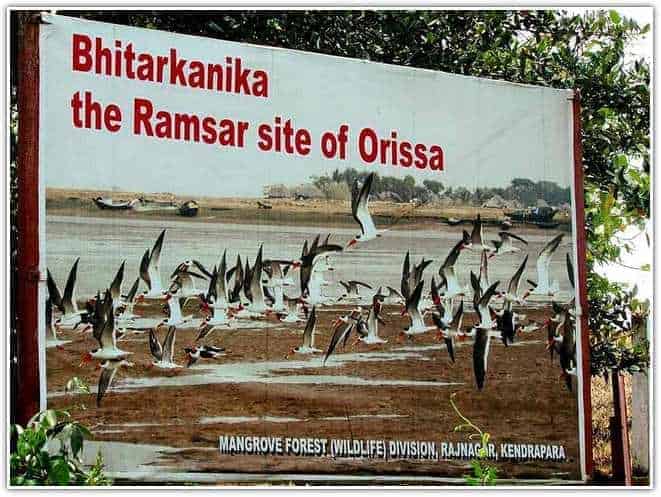
Bhitarkanika National Park is Famous for Which Animal
Bhitarkanika National Park is mainly known for the endangered crocodiles conserved here- the saltwater crocodiles. Other animals are Olive Ridley turtles, chital deer, wild boars, and poisonous snakes like pythons and cobras.
Best Time to Visit Bhitarkanika National Park
Since Orissa has sweltering summers, visiting from September to March is best.
Things To Do In Bhitarkanika National Park
The most exciting activities here are the water safari and visiting the museum. A small ferry takes you through the water channels around the mangrove forests to show you the unique flora and fauna of the swamps. Visit Gahirmatha beach to see eggs and nests of the rare Olive Ridley Turtle.
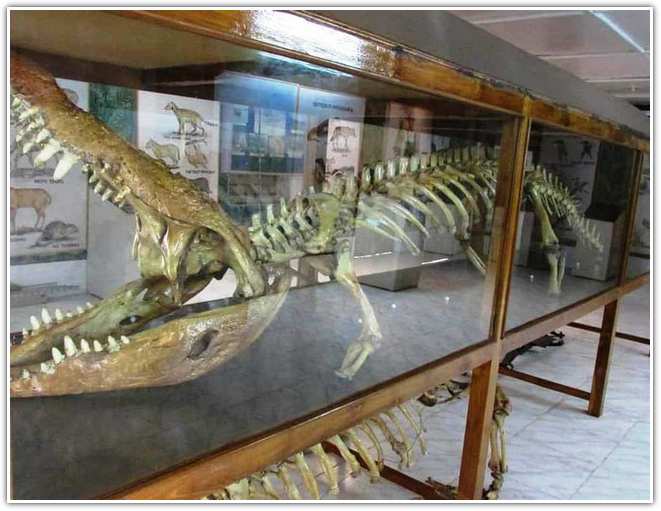
Hotel in Bhitarkanika National Park
Nature Camp Bhitarkanika Retreat is a campsite nearby where you can spend the night. There are hotels on some islands within the forest territory as well.
18. Rajaji National Park, Uttarakhand
Rajaji National Park is known for its panoramic natural landscape and lush biodiversity, which reside in the Shivalik regions of the Himalayan Mountains range. The park is named after the only native Governor-General of India, C. Rajagopalachari.
He was a freedom fighter who was affectionately known as Rajaji. Rajaji, Motichur, and Chilla were integrated in 1983 to form Rajaji National Park. It’s mainly a moist deciduous forest with sal, sissoo, and Khair trees.
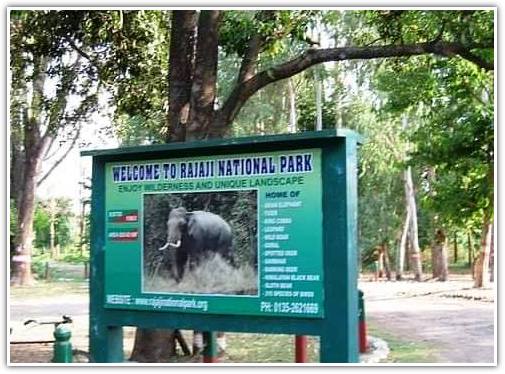
Where is Rajaji National Park Located
Rajaji National Park is situated in the three districts of Haridwar, Dehradun, and Pauri Garhwal in Uttarakhand state and spans over 820 square kilometres.
How to reach Rajaji National Park
Jolly Grant Airport is 40 km away, and Haridwar Railway Station is 7 km from the national park. Hire a taxi to cover the remaining distance.
Rajaji National Park Visiting Time
The park opens at 6 am and closes at 6 pm.
Rajaji National Park is Famous for Which Animal
The core region of Rajaji National Park is a tiger reserve, currently having 37 tigers and two tigresses. It is also known for its impressive population of Asian Elephants. Leopard, Striped hyena, Hanuman Langur, Indian Hare, Indian Porcupine, Goral, etc., are other often-seen animals.
Best Time to Visit Rajaji National Park
Rajaji National Park is closed during the monsoon. The best time to visit is after that, from November to June.
Things To Do In Rajaji National Park
Jungle safari and bird watching are the two main activities here.
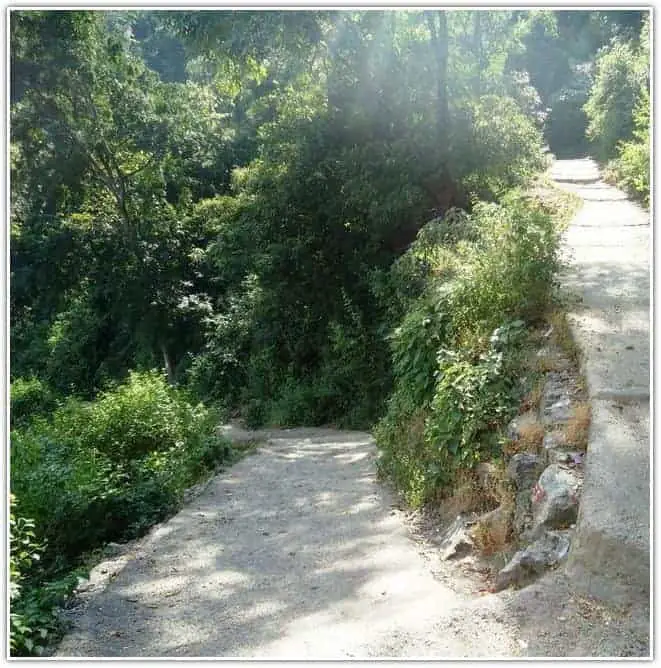
Hotel in Rajaji National Park
The park is very close to the city. There is no shortage of lodging outside the park, and KSS Inn Hotel and Utsav Hotel are good hotels in the area.
19. Panna National Park, Madhya Pradesh
Panna National Park is the largest forest in Madhya Pradesh, and it is based on the catchment area of the Ken River flowing beside it. In 1994, this was formed as a Tiger Reserve under Project Tiger.
Sadly, by 2009, the park lost its original tiger population because of poaching. However, the government plans to relocate a few tigers from other national parks next year. The forest is mainly a dry, deciduous one.
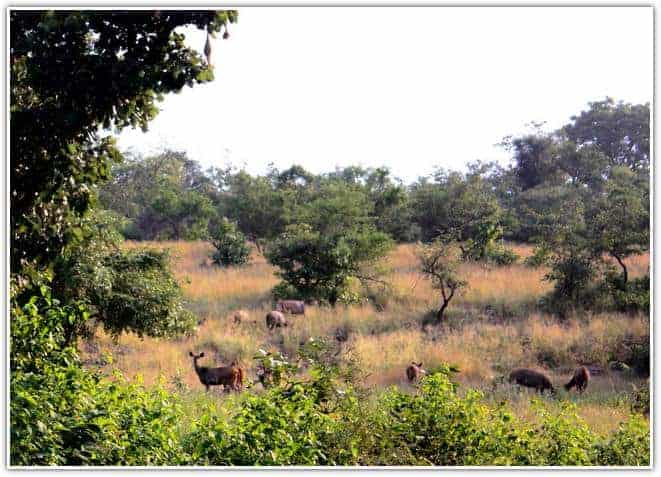
Where is Panna National Park Located
Panna National Park lies in the Vindhya Ranges, the Ken River, and is spread across the Panna and Chhatarpur districts of Madhya Pradesh, covering an area of 542.7 sq km.
How to reach Panna National Park
The nearest airport and railway station are at Khajuraho, 26 km from the national park.
Panna National Park Visiting Time
The park operates twice, morning and afternoon. The morning session starts at sunrise and ends at 11 am, and the afternoon session begins at 3 pm and ends with sunset.
Panna National Park is Famous for Which Animal
Animals seen here are the Bengal tiger(Currently 64), leopard, chital, Indian gazelle (chinkara), nilgai, sambhar, and sloth bear. The park is also home to seven varieties of vultures.
Best Time to Visit Panna National Park
October to April is the ideal time to visit Panna National Park.
Things To Do In Panna National Park
Canter or Jeep Safari is available at all the entry points. Visitors often enjoy boating on the Ken River, too.
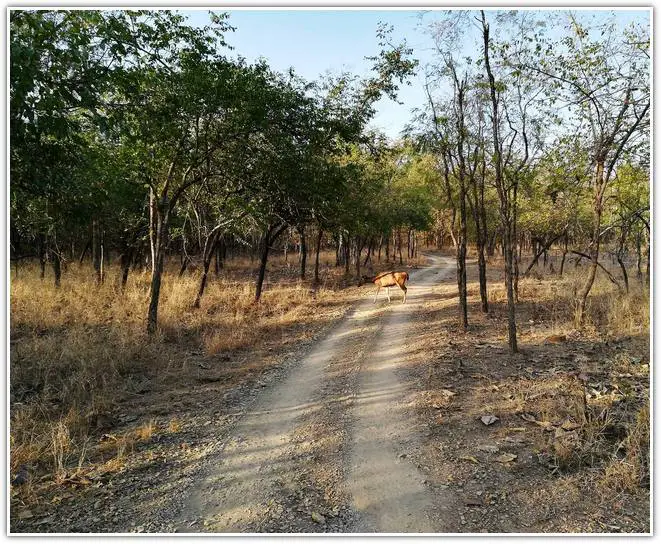
Panna National Park resort
Tendu Leaf Jungle Resort and Ken River Lodge are well-furnished hotels beside the national park.
20. Keibul Lamjao National Park Manipur
Keibul Lamjao of northeast India is a wonder of its own, and it’s reckoned as the world’s only floating national park. The floating landmass is decomposed plant materials known as “Phumdi.”
Almost two-thirds of the park is formed by this Phumdi, making it a swampland in general. First, it was designated as a wildlife sanctuary and later as a national park in 1977.

Where is Keibul Lamjao Floating National Park Located
Keibul Lamjao National Park, also called Cable Lamjao National Park, is on Loktak Lake in Manipur’s northeast state, covering over 40 square kilometres.
How to reach Keibul Lamjao National Park
The national park is a 54 km drive from Imphal. Dimapur Railway Station is the nearest (220 km), and Imphal International Airport is 32 km away.
The Keibul Lamjao National Park Visiting Time
The park officially opens at 9 am and closes at 6 pm. Reach earlier than opening time for a greater chance of seeing animals. It remains closed on Mondays.
Keibul Lamjao National Park is Famous for Which Animal
The brow-antlered deer, or Sangai deer, is the main animal of this park. It’s a rare species of deer found only in this region.
The national park was set up to care for these animals. They are the state animal of Manipur. Sangai translates into “dancing deer.” Other animals, like wild cats, foxes, hogs, etc., are also seen here.
Best Time to Visit Keibul Lamjao National Park
The entire northeast region receives significant yearly rainfall, making the climate humid. Winter is the best time to visit (October to March). During this time, the weather changes. The chance of rain is slim, and there is less humidity due to the low temperature.
Things To Do In Keibul Lamjao National Park
Tourists come here from around the world to see the magnificent Sangai deer, and it’s almost impossible to see one from ground level. Climb up the viewpoint to spot a deer easily from the greens. Take a boat ride to explore the national park properly. You can also spot different varieties of birds on this boat trip.
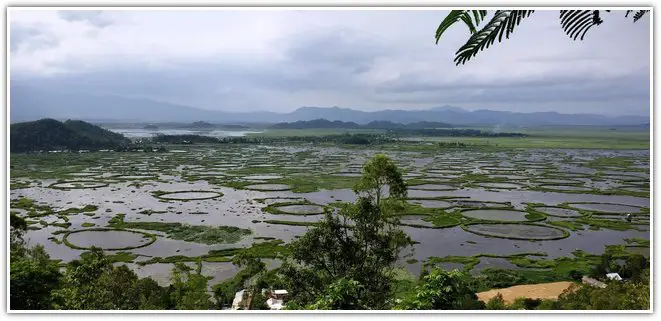
Hotel in Keibul Lamjao National Park
Most hotels are in the nearby town of Churachandpur. Fair Haven Sitlhou Home and Shaw’s B&B are two such examples.
21. Silent Valley National Park, Kerala, India
Silent Valley is the only tropical rainforest in Kerala. This forest is also known as Shola, meaning tropical rainforest in Tamil. The British named “Silent Valley” in 1847 as they observed the absence of noise-causing cicadas in this region.
The valley houses the maximum number of Macaques, commonly known as lion-tailed Macaques. It’s a UNESCO World Heritage Site and part of the Western Ghats in the Nilgiri Biosphere Reserve.
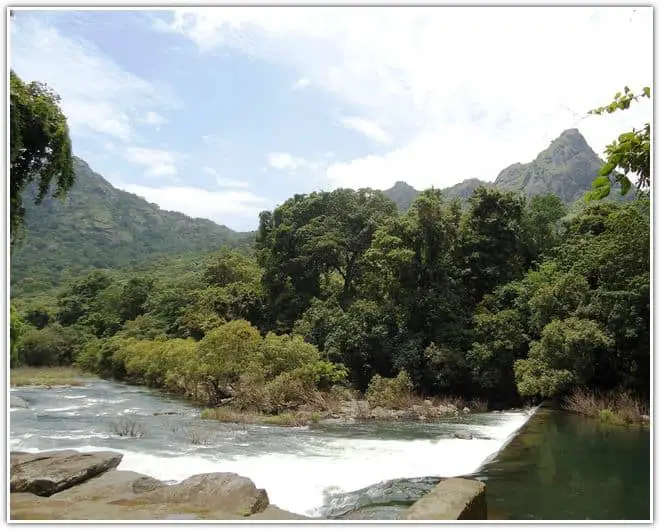
Where is Silent Valley National Park Located
Silent Valley National Park is in the Palghat district of Kerala, spans over 89.52 square kilometres and lies on the Nilgiri Hills. Bhavani, Kaveri, and Kunthipuzha Rivers flow through Silent Valley National Park.
How to reach Silent Valley National Park, Palakkad
Peelamamedu Airport in Coimbatore is the closest airport, 155 km away. Olavakkode Railway Station is the most immediate, 75 km away, and is connected to all major cities. Buses or rental cars are available from the nearest town, Mannarghat.
Silent Valley National Park Visiting Time
The park remains open from 8 am to 1 pm.
Silent Valley National Park is Famous for Which Animal
The entire valley is rich in its diverse fauna. There are found: Nilgiri tahr, Nilgiri langur, bats, monkeys, leopards, jungle cats, civets, barking deer, elephant, pangolin, Gaur, etc.
Best Time to Visit Silent Valley National Park
The best time to visit is between December and April. The cool weather makes the trip more enjoyable.
Things To Do In Silent Valley National Park
Jungle safari by jeep, watching the jungle from the watchtower, is famous here. The Silent Valley National Park authorities actively endorse forest conservation and protection missions by organising nature camps and trekking for students, allowing research space for scientists, and even preparing a yearly film festival regarding forest conservation.
Hotel in Silent Valley National Park
Hotels are a bit far from the national park area. Diga Vista Resort, the treetop resort, is a famous resort 15 km from the forest.

22. Sariska Tiger Reserve, Alwar, Rajasthan
Sariska Tiger Reserve is a dry deciduous forest in western India that extends from Gujarat to the Kathiawar-Gir region. Dhok trees form the major vegetation of this area.
The forest type is mainly arid, combining grasslands and scrublands. It was a part of the Project Tiger programme launched by the Indian government in 1978 and thus gained the status of a tiger reserve.
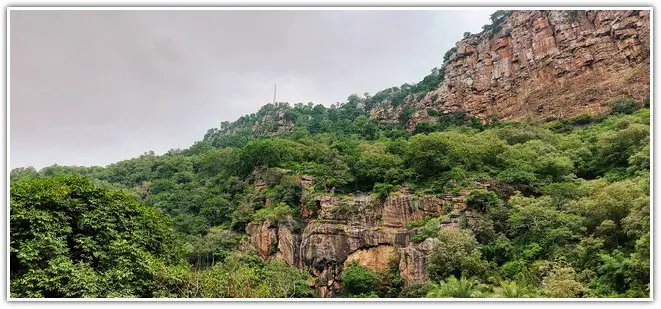
Where is the Sariska National Tiger Reserve Located
Sariska Tiger Reserve is a part of the Aravalli biodiversity region in Alwar, located in the state, covering 881 sq km.
How to reach the Sariska Tiger Reserve
Jaipur to Sariska tiger reserve distance is 107 km through NH21, and Delhi is 202 km. Jaipur International Airport is the nearest airport. From there, it takes two hours to reach the Sariska Tiger Reserve. The closest railway station is Sawai Madhopur, 11 kilometres away.
Sariska Tiger Reserve Visiting Timings
Sariska Tiger Reserve is open all week from 6 am to 3:30 pm.
Sariska Tiger Reserve is Famous for Which Animal
Sariska is known for its population of royal Bengal tigers. Other animals include leopards, different species of deer, antelopes, wild boar, langur, hyenas, and jungle cats. This place has the largest number of peafowl in India.
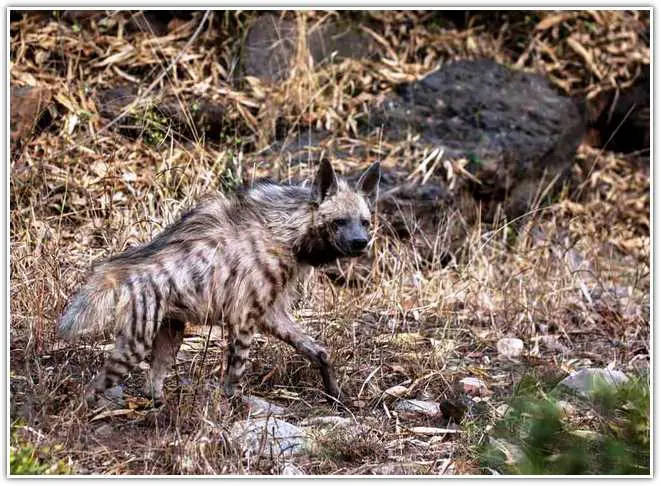
Sariska Tiger Reserve Safari booking and timing
Sariska Tiger Reserve operates its safari services twice daily from 6:00 am to 09:30 am and from 3:00 pm to 6:30 pm.
Tourists can make safari bookings online before the trip. Head to the official website of Sariska Tiger Reserve to book your safari.
Best Time to Visit Sariska Tiger Reserve
The park is open from October to May every year. This entire period is suitable for a visit.
Things To Do In Sariska Tiger Reserve
For properly exploring the vegetation and animals of this region, the Sariska wildlife safari is a must. The Kankwadi Fort is inside the forest and has a good resting point between safaris.
It’s a Mughal fort where Aurangzeb’s elder brother, Dara Shikoh, was imprisoned. Asia’s most haunted site, Bhangarh ruins, is on the outskirts of this national park.
Hotel in Sariska Tiger Reserve
There are several hotels and guest houses in the forest vicinity. You can find camp-style accommodations here. Fort View Guest House and Utsav Camp are some examples.
Read Different Types of Tourism | Globally Accepted
23. Pilibhit Tiger Reserve, Uttar Pradesh
Within the flute district of Pilibhit resides the 46th tiger reserve of India. It’s the border between India and Nepal. The forest is mainly moist deciduous, characterised by tall Sal trees and grasslands, with the River Ghagra and the River Sharda encompassing the area.
The tiger reserve comprises nearly 23% of the total landmass of this district. This area was reserved for timber collection before turning into a tiger reserve in 2014.
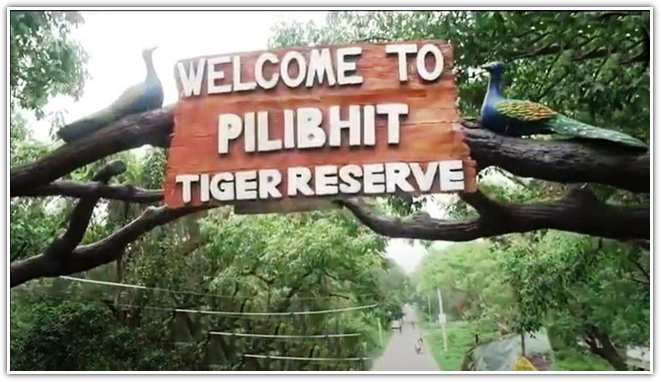
Where is the Pilibhit Tiger Reserve Located
Pilibhit Tiger Reserve in Pilibhit district extends into the adjacent Shahjahanpur district of Uttar Pradesh and spans over 232.74 square kilometres.
How to reach Pilibhit Tiger Reserve
Lucknow airport is the nearest at 250 km from Pilibhit. Bareilly is the nearest railway station with connections to major cities of India. You have to take the road through Shahjahanpur when travelling by car.
Pilibhit Tiger Reserve Visiting Time
It’s open to the public from 7 am to 9 pm.
Pilibhit Tiger Reserve is Famous for Which Animal
It’s home to five different deer species. Namely, swamp deer, spotted deer, hog deer, barking deer, Blackbuck, and sambar. Other animals include the Bengal tiger (currently 65), leopard, sloth bear, fox, langur, Indian civet, jackal, etc.
Best Time to Visit Pilibhit Tiger Reserve
The rainy season makes it difficult for a forest tour. September to June is the best time for a visit.
Things To Do In Pilibhit Tiger Reserve
The jungle safari here shows the natural beauty and diversity of this place. The Chuka Beach nearby is a great place to relax and recharge after a day’s trip.
Chuka beach Pilibhit
Chuka Beach is a beautiful spot in Pilibhit National Park, located between the Sharda Sagar Dam and Sharda Cana. The beach is 10 km long with Pipal and Pakar trees on the side. Grasslands nearby are homes to animals like wild hares, monkeys, boars, birds like quails, flamingos, ducks, and many more.
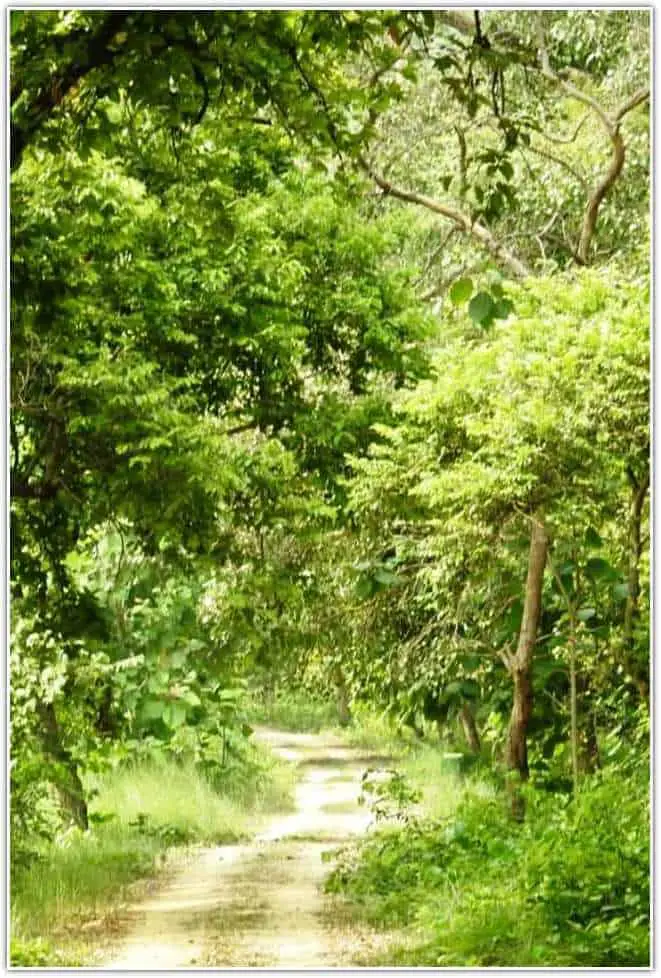
Pilibhit Tiger Reserve accommodation
Different types of resorts, lodges and hotels are available. Pavan Residency and Hotel Perchwood are two hotels nearby.
24. Turahalli Forest, Bangalore
Turahalli forest is a serene spot of greenery just outside the metropolitan city of Bengaluru. This artificial forest is categorised as a dry, deciduous one. There are primarily tall grasses, eucalyptus plants, and some wild shrubs.
In recent years, prohibited activities have significantly impacted the forest. People illegally used it as a garbage dumping zone and created pollution. Local people also cleared some of the forest lands for cultivation. As it’s the few forests in Bangalore, the state government has taken the cudgel to conserve nature.
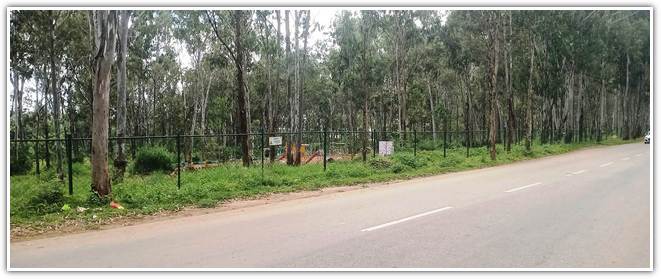
Where is Turahalli Forest Located
Turahalli Forest in Bangalore covers an area of 590 acres. It’s at a distance of 20 km from Bengaluru, off Kanakapura Road in Karnataka.
How to reach Turahalli Forest, Bengaluru, Karnataka
The nearest airport and railway station are in Bengaluru. The distance from Turahalli forest, Bangalore, is 6.4 km through Kanakapura Road. Hire a cab from there to reach the forest.
Turahalli Forest Visiting Timings
It’s an open forest, so you can visit it whenever you like. The preferred time is from 9 am to 3 pm.
Turahalli Forest is Famous for Which Animal
Some animals like spotted deer, wild boar, jackals, foxes, mongooses, and various types of birds are also seen here.
Best Time to Visit Turahalli Forest
After the monsoon, it’s the best time to visit. The months of September to March are the ideal time.
Things To Do In Turahalli Forest
Besides exploring the green nature, cycling and trekking on Omkar Hill are the favourite tourist activities here. People from the nearby area often come here to cycle and relax a little during their free time.
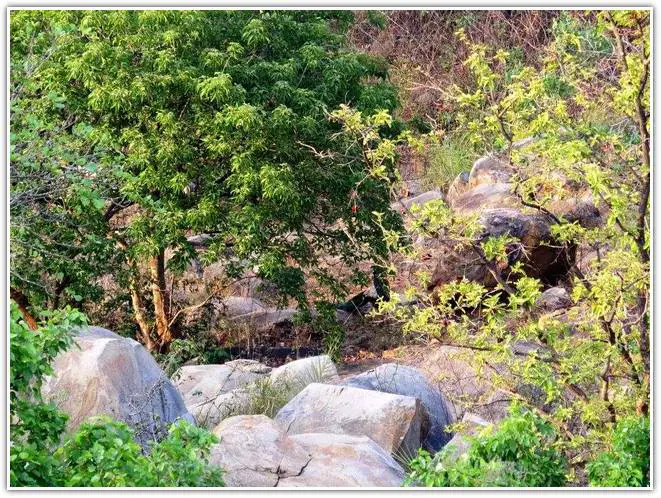
Hotel in Turahalli Forest
Many hotels are located in this area, such as Global Corporate Inn, Hotel Golden Paradise, Shakthi Hill Resort, etc.
25. Dr Salim Ali Bird Sanctuary, Goa
Named after the great Indian ornithologist, Salim Ali Bird Sanctuary is a bird sanctuary in Southern India. It’s an estuarine habitat formed by mangrove plants. It’s among India’s earliest established bird sanctuaries, created in 1988. Tourists with a permit from the Chief Wildlife Warden of the Forest Department of Panaji can enter.
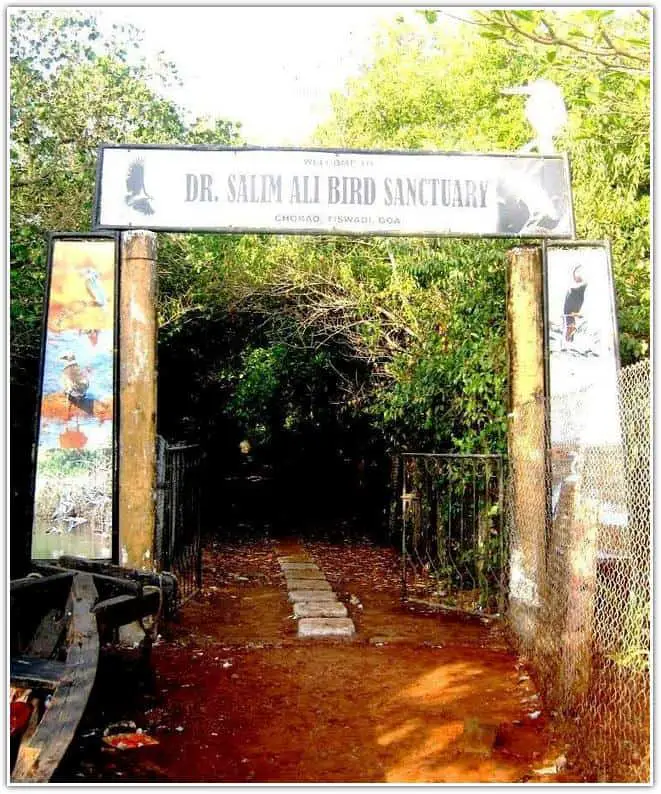
Where is the Salim Ali Bird Sanctuary Located
Dr Salim Ali Bird Sanctuary is on the southern part of Chorao island in the Mandovi River in Goa and covers an area of 440 acres.
How to reach the Salim Ali Bird Sanctuary
The only way to reach the Bird Sanctuary is by ferry from Ribander. The nearest railway station and airport are at the state capital, Panaji, a 15-minute drive from the ferry station.
Salim Ali Bird Sanctuary Visiting Timings
The park remains open from 6 am to 6 pm every week.
Salim Ali Bird Sanctuary is Famous for Which Animal
The sanctuary is home to several birds. Varieties of heron, bittern, red knot, jack snipe, egrets, woodpeckers, and others are the birds that can be seen from here. Amphibians, like mudskippers, different crabs, and fish, also survive well because of the mangrove vegetation.
Best Time to Visit Salim Ali Bird Sanctuary
The sanctuary remains open throughout the year, but winter is the best time to watch the marvellous birds. It would be best to avoid the rainy season as the ferry system is hampered due to high water levels. Visit early in the morning to catch a glimpse of birds in their natural habitat.
Things To Do In Salim Ali Bird Sanctuary
Explore the sanctuary on foot or on a bicycle. You can also take a peaceful boat ride through the mangrove forests.
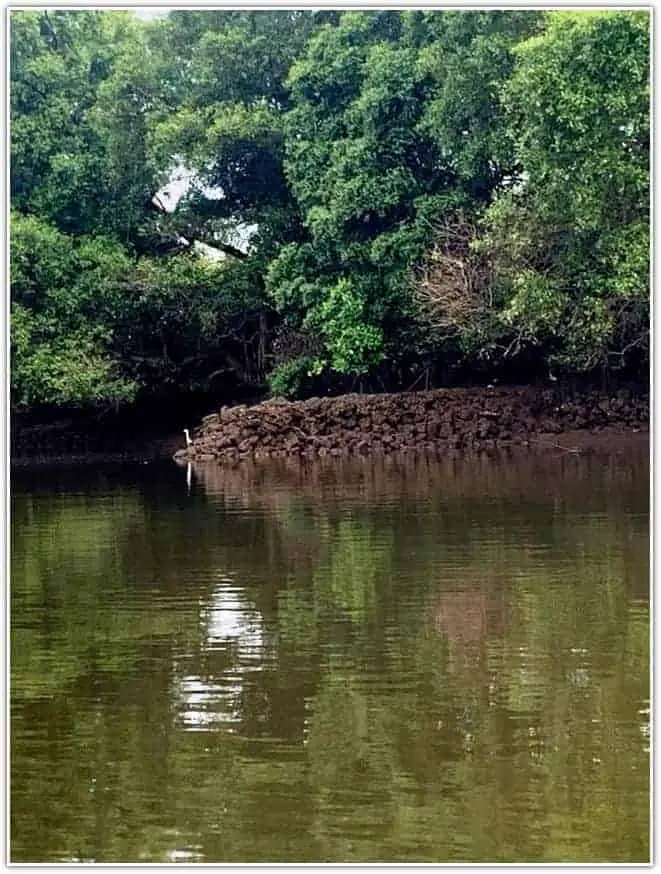
Hotel in Salim Ali Bird Sanctuary
Hotels can be found in Ribandar. River-view accommodations like Serene Water Goa are good places to spend the night.
26. Orang National Park Guwahati
Orang National Park is the oldest forest in Assam. The land was initially inhabited by local Orang tribes who left in the early 1900s and were established as a sanctuary in 1985. The British government then took control of it and named it after the original settlers.
It lies on the banks of the Brahmaputra River, part of the Indo-Burma Biodiversity Hotspot. The forest is a mixture of grasslands, swamplands, and deciduous vegetation.
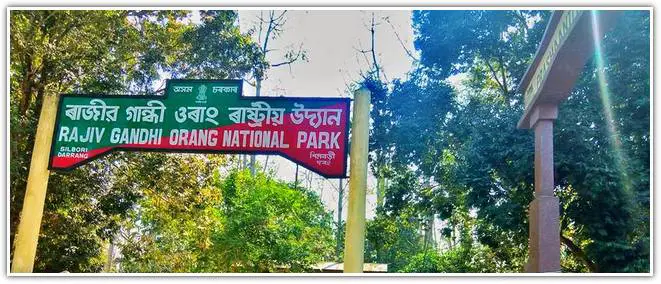
Where is the Orang National Park Located
Orang National Park in Assam covers an area of 78.81 sq km. It’s in the Darrang and Sonitpur districts of Assam.
How to reach the Orang National Park
The nearest airport is at Tezpur, 60 km away, and Saloni Railway Station is the closest at 55 km. Orang National Park is 140 km away from the state capital, Guwahati.
Orang National Park Visiting Time
It opens two times a day – from 7:30 am to 9:30 am and again from 2 pm to 3 pm.
Orang National Park is Famous for Which Animal
This park is mainly famous for its one-horned rhinoceros, royal Bengal tigers, and Asiatic elephants. All endangered animals, like the Pygmy hog, are given special care to protect them within their natural habitat. Fox, leopard, pangolin, civets, porcupine, etc., are found here.
Best Time to Visit the Orang National Park
The best time to visit is between November to April. The chances of rainfall are less, and the temperature is also lower around this period.
Things To Do In Orang National Park
An elephant safari is the most exciting thing to do here. Many bird watchers love this place. The Brahmaputra river cruise trip is an exciting event, and the cruise ship provides all the facilities on board.
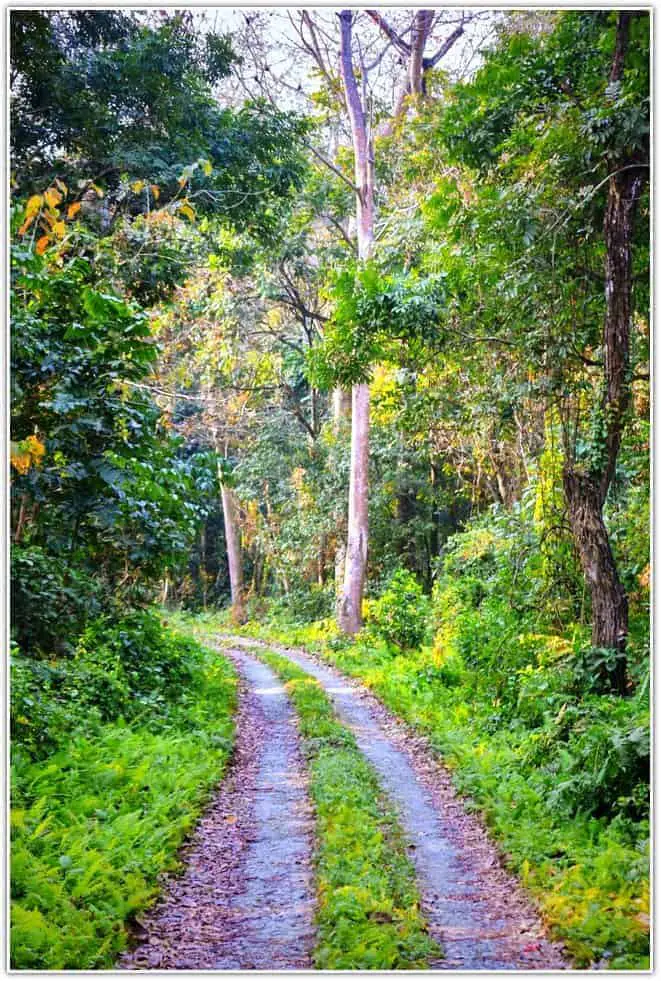
Hotel in Orang National Park
Prashanti Tourist Lodge and Satsimulu Bungalow by the Assam Government are two accommodations within the forest area. You can experience real jungle life from here.
27. Khangchendzonga National Park Sikkim
The Kanchenjunga Biosphere Reserve or Khangchendzonga National Park is a UNESCO World Heritage site in Sikkim. The national park has varied topography, like mountains, valleys, lakes, and glaciers.
Most of the forest is covered with alpine vegetation and sub-tropical plantations in a few places. The world’s third-highest peak, Kanchenjunga, lies within this area. It’s a sacred place to Buddhists and Lepchas.
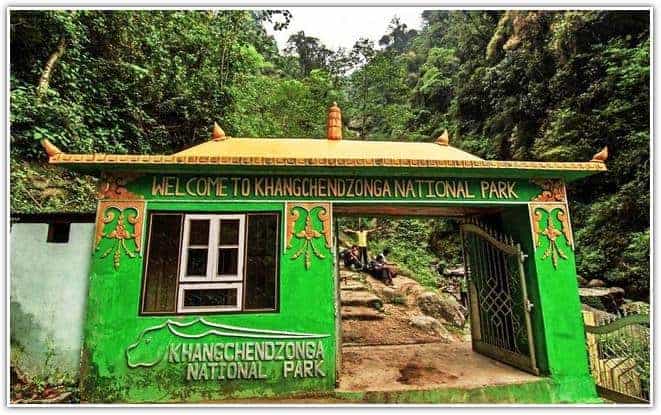
Where is Khangchendzonga National Park Located
Khangchendzonga National Park in Sikkim spans an area of 1,784 square kilometres. Khangchendzonga National Park is in the North Sikkim district of Sikkim.
How to reach Khangchendzonga National Park
The nearest airport is Bagdogra Airport in the Darjeeling district of West Bengal, 122 km from the national park and a 4-hour drive. The nearest station is NJP, or New Jalpaiguri Railway Station. The majority of the journey thus has to be covered by a car.
Khangchendzonga National Park Visiting Time
It’s open all day. Sundays are closed.
Khangchendzonga National Park is Famous for Which Animal
Khangchendzonga National Park has six cat family members: Leopard, Clouded Leopard, Snow Leopard, Jungle Cat, Golden Cat, and Leopard Cat. The snow leopard is the flagship species in this area. Other animals include the Jackal, the Tibetan Wolf, the large Indian Civet, the Red Panda, the Blue Sheep, the Himalayan Tahr, the Mainland Serow, species of deer, and more.
Best Time to Visit Khangchendzonga National Park
March to May is the ideal time to visit the state of Sikkim and Khangchendzonga National Park.
Things To Do In Khangchendzonga National Park
A safari within the forests is the most important thing at Khangchendzonga National Park. There are several trekking trails here. The Tholung Monastery in the buffer area is the most famous in Sikkim. Visit this place to learn about the rich culture and history of Buddhism.
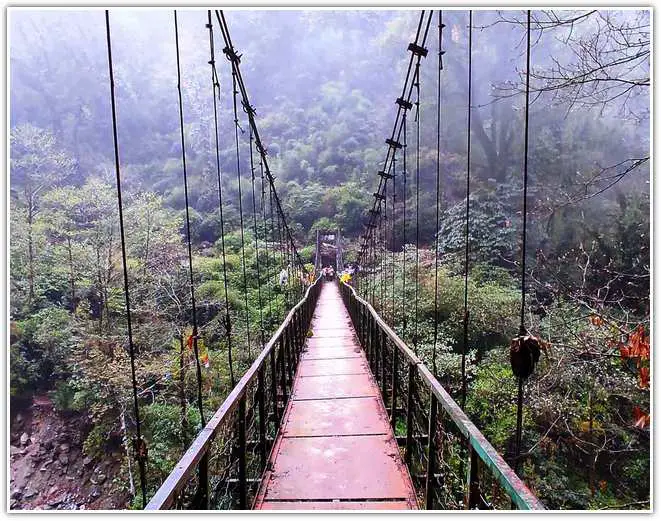
Hotel in Khangchendzonga National Park
The park is high up in the mountains, so most hotels are away from it in the nearby towns. Munlom Nature Resort is a well-furnished resort in Mangan. There are a few in Lachen, such as the Zoumsa Hotel.
Read List of Highest Mountain Peaks in India
28. Bandipur Tiger Reserve, Bangalore
Bandipur Tiger Reserve was earlier named Venugopala Wildlife Park, and the then-ruler of Mysore formed it. In 1941, the entire area, including Venugopala Wildlife Park, was cordoned off to create Bandipur National Park. Later, it was named Bandipur Tiger Reserve under the Project Tiger initiative in 1973.
The forest is at the meeting point of the Deccan Plateau and the Western Ghats, mainly a deciduous type of forest with shrublands. Kabini and Moyar rivers flow by the border of this park.
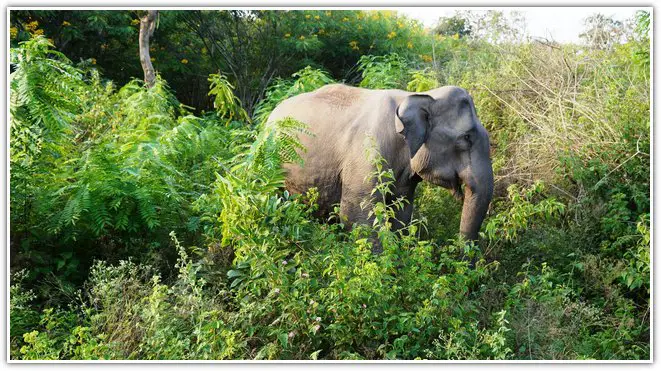
Where is Bandipur Tiger Reserve Located
Bandipur Tiger Reserve in Karnataka covers an area of 874 sq km. It’s spread across the Mysore Chamarajanagar district of Karnataka.
How to reach Bandipur Tiger Reserve
Coimbatore airport is closest to Bandipur Tiger Reserve at 84 km. The nearest railway station is Mysore Railway Station, 80 km away. The state capital of Bangalore is 200 km away from the reserve forest. Daily buses and cab services ply from Bangalore.
Bandipur Tiger Reserve Visiting Time
It’s open from 6:30 am to 9 am and 3 pm to 5:30 pm.
Bandipur Tiger Reserve is Famous for Which Animal
Bandipur is mainly a tiger reserve, but other endangered species of animals are seen here. A few are Indian elephants, gaurs, tigers, sloth bears, muggers, Indian rock pythons, four-horned antelopes, foxes and jackals, dholes, etc.
Best Time to Visit Bandipur Tiger Reserve
October to March is the ideal time to visit Bandipur, as the winter season keeps the temperature cool.
Things To Do In Bandipur Tiger Reserve
You can take a safari in a jeep or a gipsy car to witness the animals in their original habitat. Elephant rides are also available. Tourists also like to walk along the edge of the buffer zone to take in the natural beauty.
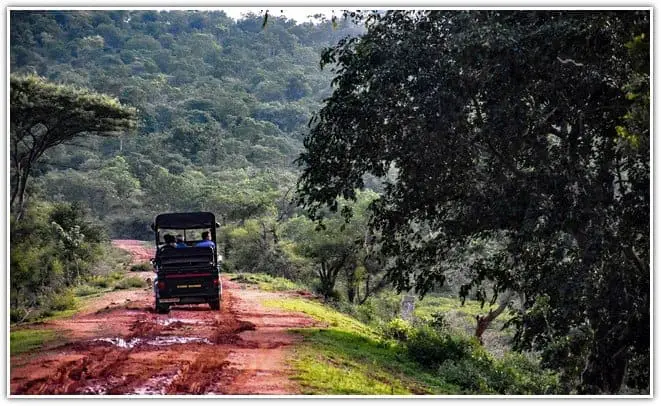
Hotel in Bandipur Tiger Reserve
The Windflower Jungle Resort and The Serai Bandipur are the two closest accommodations to the forest.
29. Buxa Tiger Reserve, West Bengal
Buxa Tiger Reserve is in the Dooars region of West Bengal. The Buxa Fort is an important symbol of India’s struggle for Independence. The name of the forest derives from this place. Buxa is mainly classified as a moist tropical forest.
In 1983, Buxa was started as the 13th Tiger Reserve of India. During this time, Buxa had the third-highest tiger population in the country. At present, the number of tigers has significantly decreased. Buxa forest forms a border between India and Bhutan. The entrance to the reserve is at a place named Rajabhatkhawa. Entry is permitted only through a safari.
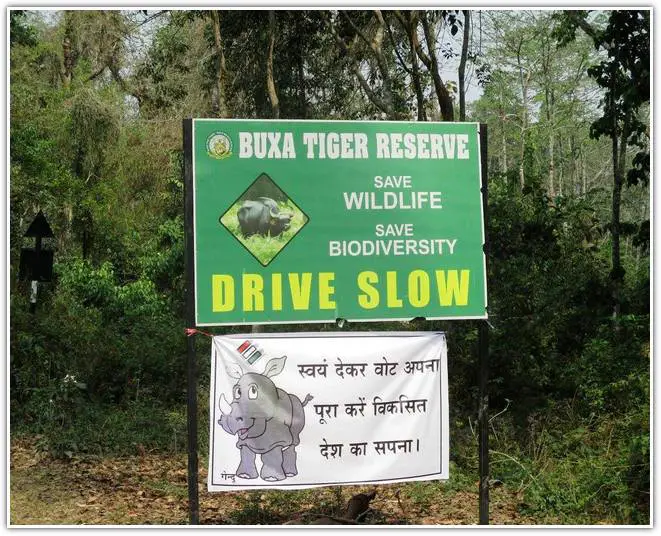
Where is Buxa Tiger Reserve Located
Buxa Tiger Reserve in West Bengal spans an extent of 760 square kilometres. It’s in the Alipurduar district of West Bengal.
How to reach Buxa Tiger Reserve
The easiest way to reach Jayanti Buxa Tiger Reserve is by train. Buxa Raja Bhat Khaoa and Alipurduar Railway Station are the nearest railway stations, 11 km away.
You can easily reach NJP from Sealdah railway station in Kolkata by a one-night journey. After you need a car, getting to Buxa Jungle takes 4 to 5 hours. Raja Bhat Khaoa is the entry point of the Buxa forest. Bagdogra airport is the nearest.
Buxa Tiger Reserve Visiting Time
The morning shift is from 6 am to 11 pm. The park is open from 2 pm to 6 pm.
| Day | Morning | Afternoon |
| Monday | 6:00 AM – 11:00 AM | 2:00 PM – 06:00 PM |
| Tuesday | 6:00 AM – 11:00 AM | 2:00 PM – 06:00 PM |
| Wednesday | 6:00 AM – 11:00 AM | 2:00 PM – 06:00 PM |
| Thursday | 6:00 AM – 11:00 AM | 2:00 PM – 06:00 PM |
| Friday | 6:00 AM – 11:00 AM | 2:00 PM – 06:00 PM |
| Saturday | 6:00 AM – 11:00 AM | 2:00 PM – 06:00 PM |
| Sunday | 6:00 AM – 11:00 AM | 2:00 PM – 06:00 PM |
Note:- 16 June to 15 September is the monsoon season; the safari is closed in the Dooars region due to rain and animal breeding.
Buxa Tiger Reserve is Famous for Which Animal
Wildlife in Buxa Tiger Reserve includes tigers, elephants, bison, varieties of deer, hog badger, hyenas, leopards, common and Chinese pangolin, and many more. The Buxa Tiger Reserve has two watchtowers, 26 miles and 23 miles.
Best Time to Visit Buxa Tiger Reserve
Winter is the ideal time for visiting. December to February is the best time to plan your trip.
Things To Do In Buxa Tiger Reserve
The jeep safari to Chunia Watchtower is a well-known activity. There are several trek routes through the park as well. These trekking routes are adorned by natural flora and the unique orchids of this region.
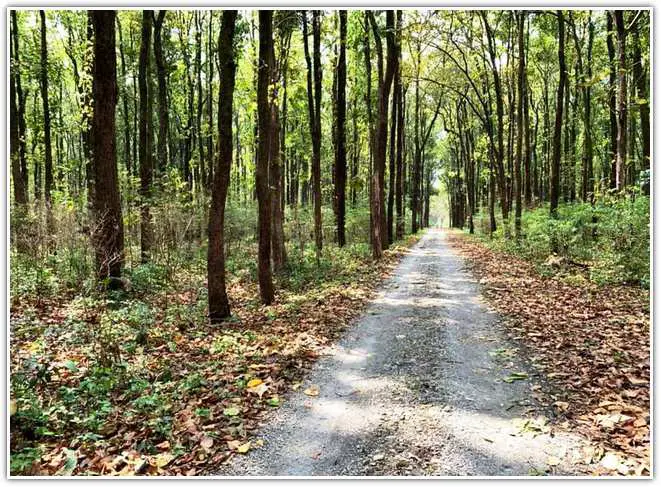
Hotel in Buxa Tiger Reserve
The nearest hotels are in Jayanti, like the Rajabhatkhawa Buxa Jungle Lodge, Vamoose Aaltapori and Vamoose Jayanti Riverview.
30. Pobitora Wildlife Sanctuary, Assam
Pobitora Wildlife Sanctuary is the area with the maximum population of one-horned rhinoceros in Assam, and it’s a lesser-known tourist spot. The Brahmaputra River borders it from the north. Pobitora is the closest wildlife centre to Guwahati. It predominantly has grassland vegetation.
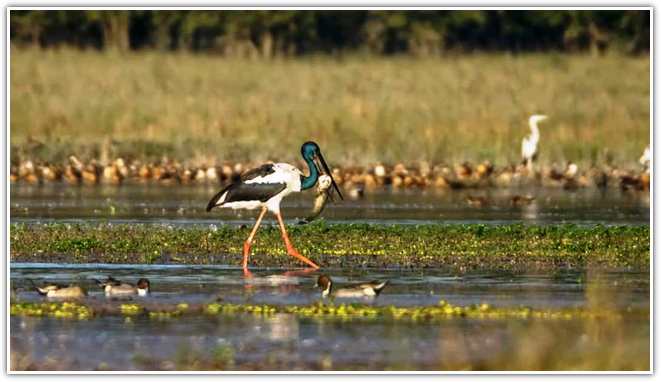
Where is Pobitora Wildlife Sanctuary Located
Pobitora Wildlife Sanctuary in Assam covers an area of 15 sq km. It’s in the Morigaon district of Assam.
How to reach Pobitora Wildlife Sanctuary
The distance between Guwahati and Pobitora Wildlife Sanctuary is 48 km. Guwahati airport and rail stations are connected to all major cities in the country. Jagiroad is the closest railhead to the sanctuary.
Pobitora Wildlife Sanctuary Visiting Time
The park is open from 6:30 am to 5 pm except on Friday.
Pobitora Wildlife Sanctuary is Famous for Which Animal
The forest is mainly known for conserving the endangered species of one-horned rhinos. According to the latest census of 2018, there are 102 total rhinos in this sanctuary. Other animals include water buffaloes, golden jackals, boar, etc.
Best Time to Visit Pobitora Wildlife Sanctuary
The sanctuary is closed during the monsoon between May and November. The perfect time to visit is when it reopens from November to March.
Things To Do In Pobitora Wildlife Sanctuary
Pobitora Wildlife Sanctuary provides jeep and elephant safaris for visitors. Bird watching is famous here. The well-known mysterious town of Mayong from the documentary “Mayong Myth/Reality” is only a few kilometres away.
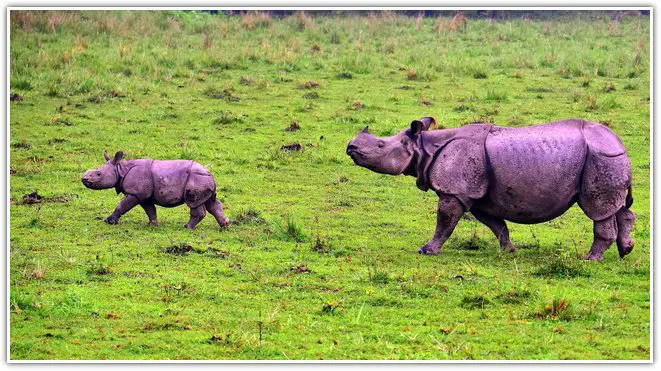
Hotel in Pobitora Wildlife Sanctuary
Near the sanctuary, there are several campsites and hotels. Riverine Rock Retreat and Chanaka Jungle Camp are a few examples. Lodges are mainly in Guwahati.
31. Coringa Wildlife Sanctuary, Andhra Pradesh
Coringa Wildlife Sanctuary is India’s largest mangrove forest after the Sundarbans. It’s formed as the delta region of the River Godavari when it meets with the Bay of Bengal on the east coast. The vegetation is mainly estuarine. 40% of the area is sea-backwater. It received the status of a wildlife sanctuary in 1998.
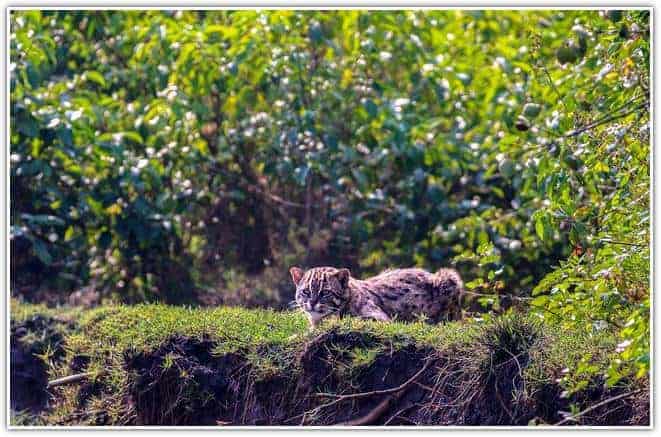
Where is Coringa Wildlife Sanctuary Located
Coringa Wildlife Sanctuary in Andhra Pradesh spans 235.7 square kilometres. It’s near Kakinada, the city of East Godavari, and the district of Andhra Pradesh.
How to reach Coringa Wildlife Sanctuary
The nearest airport is 60 km away in Rajahmundry. Kakinada is the closest city to Coringa, 20 km away. The nearest railhead can be found here.
Coringa Wildlife Sanctuary Visiting Timings
It is open from 9 am to 5 pm daily except on Tuesdays. The sanctuary remains closed on Tuesdays.
Coringa Wildlife Sanctuary is Famous for Which Animal
It protects two endangered vulture species: the white-backed vulture and the long-billed vulture. Jackals, sea turtles, fishing cats, and olive ridley turtles are other fauna seen here.
Best Time to Visit Coringa Wildlife Sanctuary
The ideal time to visit is from December to June.
Things To Do In Coringa Wildlife Sanctuary
Tourists can go boating in the backwaters of the Godavari. Visit nearby Hope Island, which is exclusively decorated for tourists. You can check out the excavation site of Adurru, known for its Buddhist stupas and other historical artefacts related to the sacred religion.
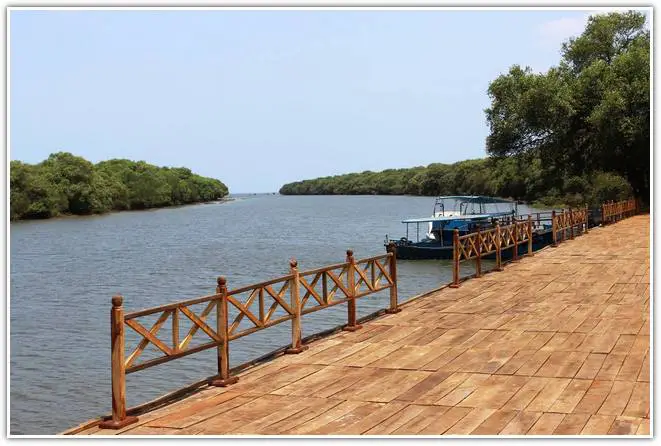
Hotel in Coringa Wildlife Sanctuary
All nearby lodging options are within a 20 km distance from Coringa Wildlife Sanctuary. Paradigm Sarovar Portico and Royal Park are two hotels with restaurants and free parking spaces.
32. Wayanad Wildlife Sanctuary, Kerala
Wayanad Wildlife Sanctuary is the second largest sanctuary in God’s Own Country, Kerala. It’s part of the Nilgiri Biosphere Reserve and comprises the four ranges: Sulthan Bathery, Muthanga, Kurichiat, and Tholpetty.
The park was established in 1973 and brought under the Project Elephant programme in 1991. The forest has mainly deciduous trees and thus can be classified as moist deciduous.
The district of Wayanad has rich historical significance. The majority of the state’s Adivasi population resides here. This place shows signs of the earliest human settlement from the ancient era.
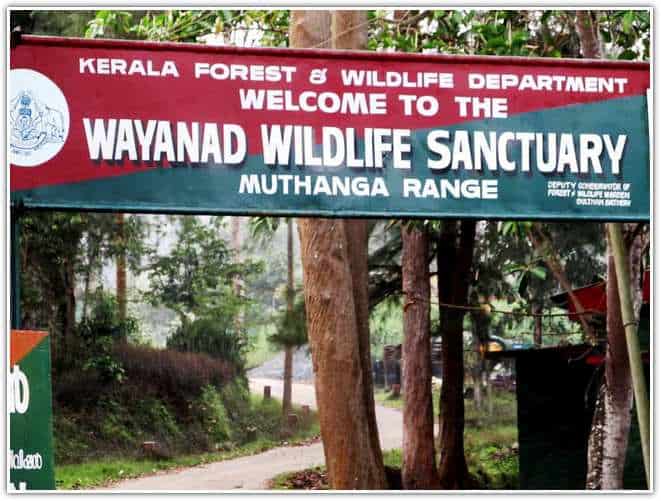
Where is Wayanad Wildlife Sanctuary Located
Wayanad Wildlife Sanctuary in Kerala covers an area of 344 sq km. It’s in the Wayanad district of Kerala.
How to reach Wayanad Wildlife Sanctuary
The closest airport is in Mysore, 95 km away. Kozhikode town is 98 km away and has the nearest railway station to Wayanad Wildlife Sanctuary.
Wayanad Wildlife Sanctuary Visiting Time
The first half is from 7 am to 10 am. The second half begins at 3 pm and ends at 5 pm.
Wayanad Wildlife Sanctuary is Famous for Which Animal
Some animals are Asian Elephants, Leopards, Spotted deer, Gaur, Barking Deer, Slender Loris, etc. Jungle Cats are seldom spotted. Recent studies show that the four-horned antelope Ullman might be present here. It’s home to an impressive group of birds.
Best Time to Visit Wayanad Wildlife Sanctuary
The sanctuary is open all year round, but August to February is the best time to visit.
Things To Do In Wayanad Wildlife Sanctuary
A safari in Wayanad Wildlife Sanctuary will show you the exotic flora and fauna of the Western Ghats. Bird watching is a favourite activity here. Visit the elephant camps and breeding centres to learn about these majestic beasts.
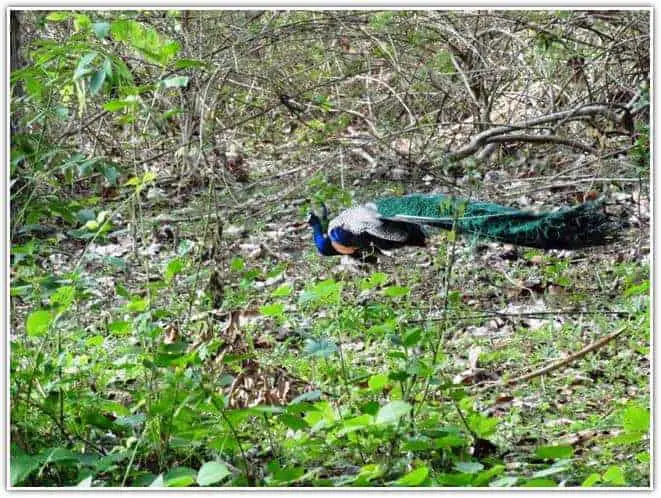
Hotels and resorts in Wayanad Wildlife Sanctuary
All types of accommodation are available near the sanctuary, from lavish resorts to forest bungalows and campsites. Oryx Forest Stay, Rithu Campings and Raindrops Resort are all within a 10 km radius of the forest.
33. Parambikulam Tiger Reserve, Kerala
Parambikulam Tiger Reserve is a part of the Nelliampathy–Anamalai subunit of the Western Ghats within Parambikulam Wildlife Sanctuary. It was established in 2010 and recently became a UNESCO World Heritage Site.
The reserve has diversified habitats. Evergreen, moist, or dry deciduous trees are found on the surface. Teak trees, used for sturdy furniture, are found in abundance.
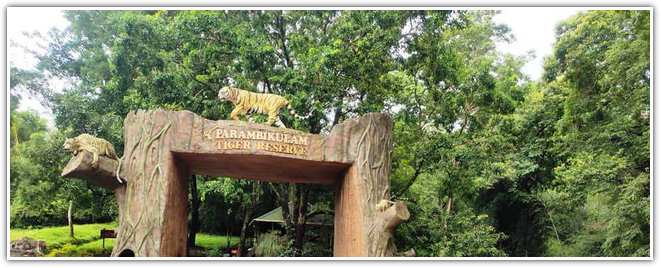
Where is the Parambikulam Tiger Reserve Located
Parambikulam Tiger Reserve in Kerala spans an extent of 285 square kilometres. It’s in Kollengode Block, Chittur taluk in the Palakkad district of Kerala.
How to reach Parambikulam Tiger Reserve
The closest airport and railway station are in Coimbatore, which is 110 km away from the reserve. The Roadway system connects Parambikulam with the nearby cities and states.
Parambikulam Tiger Reserve Visiting Hours
The tiger reserve opens at 5 in the morning and closes at 7 pm.
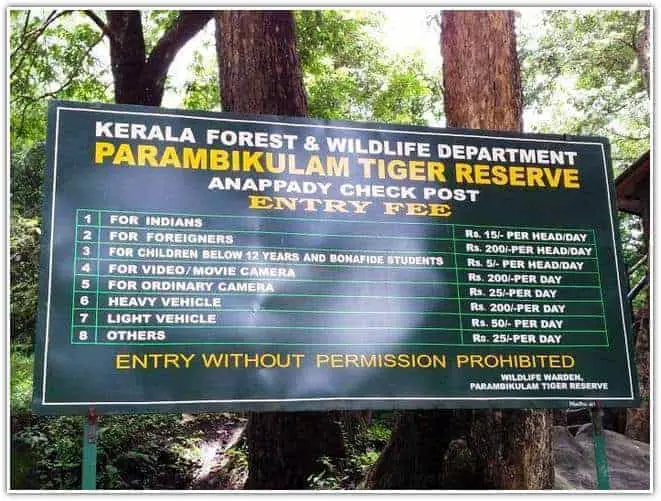
Parambikulam Tiger Reserve is Famous for Which Animal
Other than Tigers, Asian elephants, Gaur, Spotted deer, Sambar, Barking deer, Nilgiri tahr, flying squirrel, etc., are seen here. It has the highest Gaur density in South India.
Best Time to Visit Parambikulam Tiger Reserve
August to March is the best time to visit the tiger reserve as conditions become more favourable post-monsoon.
Things To Do In Parambikulam Tiger Reserve
Apart from the exciting jeep safari, trekking and bird watching are two activities tourists can indulge in here.
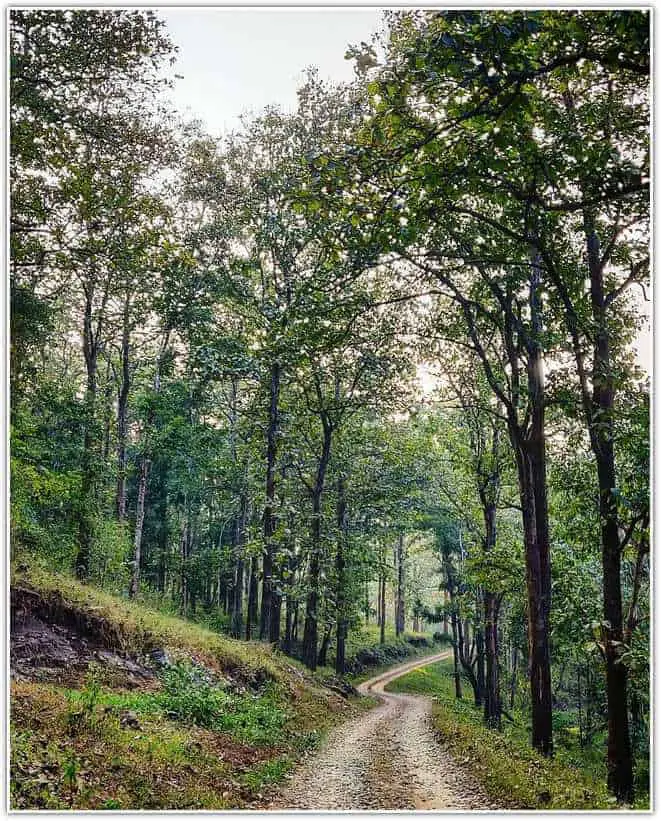
Hotel in Parambikulam Tiger Reserve
Kerala Forest Department has set up accommodations within the forests. Try to book one of these to explore the wilderness properly.
34. Kanha Tiger Reserve, Madhya Pradesh
Kanha Tiger Reserve, or Kanha–Kisli National Park, is the largest forest in Madhya Pradesh. It’s divided into two areas, namely Hallon and Banjar. Both of them have eight zones between them.
The forest is tropical deciduous in some places and moist in others. Kanha is known for being the first to introduce a mascot for their reserve – Bhoorsingh, the Barasingha deer.
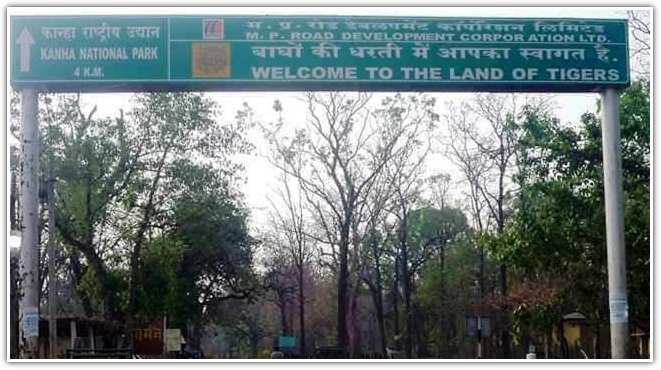
Where is Kanha Tiger Reserve Located
Kanha Tiger Reserve in Madhya Pradesh covers an area of 940 sq km. It’s spread across the Mandla and Balaghat districts of Madhya Pradesh.
How to reach Kanha Tiger Reserve
Gondia Railway Station is the nearest Kanha Tiger Reserve, roughly a three-hour drive. The closest airport is Jabalpur, 160 km away.
Kanha Tiger Reserve Visiting Time
Entry is permitted only through a safari organised by the forest department. The first shift is from sunrise to 11 am, and the following shift is from 2 pm to sunset.
Kanha Tiger Reserve is Famous for Which Animal
It has the Tiger, Leopard, Sloth bear, Foxes and Jackals, and Barasingha and Gaur. Blackbuck is rarely sighted.
Best Time to Visit Kanha Tiger Reserve
Winters are the best time to visit. November to February should be an ideal time to plan the trip.
Things To Do In Kanha Tiger Reserve
The safari here more often offers a sight of the big cat. Explore the nearby tribal villages and their local art to witness the rich culture during your free time.
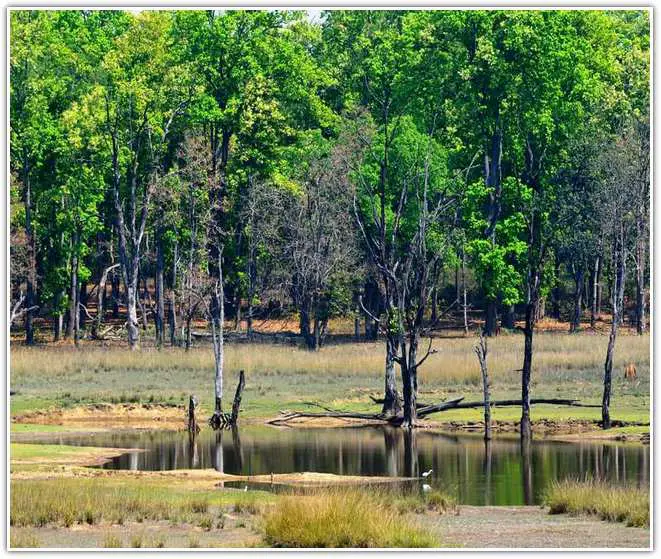
Hotel in Kanha Tiger Reserve
Book a room at Kanha Resort or Camp Dev Vilas to stay near nature.
35. Satpura Tiger Reserve, Madhya Pradesh
Named after the nearby Satpura Range, Satpura Tiger Reserve was established in 1981. The tiger population has lessened over the years, and now a tiger sighting is rare.
Madhya Pradesh has the country’s most extensive forest cover, and this tiger reserve is among the first reserved forests in India. It was declared a tiger reserve in 2000. Nowadays, the state is facing a significant crisis of depletion of greenery. All these old forests are slowly vanishing due to the economic usage of forest products.
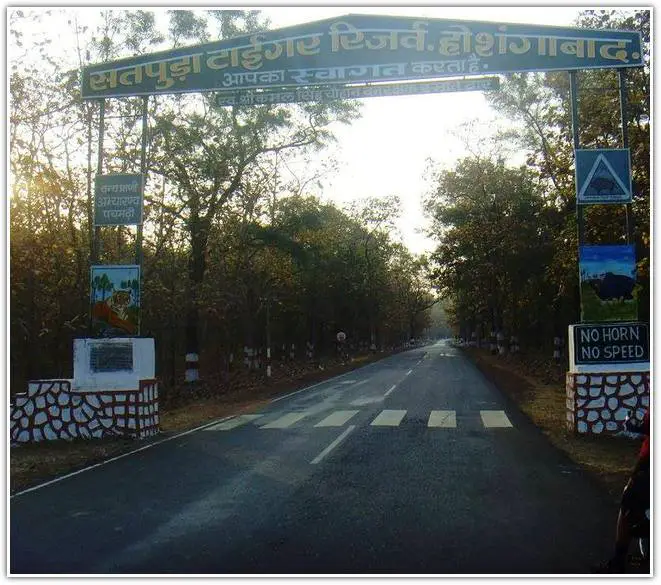
Where is Satpura Tiger Reserve Located
Satpura Tiger Reserve in Madhya Pradesh spans an extent of 524 square kilometres. It’s in the Narmadapuram (previously known as Hoshangabad) district of Madhya Pradesh.
How to reach Satpura Tiger Reserve
The nearest airport is in the city of Bhopal, 176 km away. Itarsi is the closest railway station, only 70 km away.
Satpura Tiger Reserve Visiting Time
It’s open from 9 am to 5 pm.
Satpura Tiger Reserve is Famous for Which Animal
The main attractions of this reserve are Black Buck, Leopard, Dhole, Indian Gaur, Malabar Giant Squirrel, Sloth Bear, Indian Bison, Deer, Pangolin, Marsh Crocodile, Barasingha, etc.
Best Time to Visit Satpura Tiger Reserve
The park remains closed from July to September because of rain. November to March is the ideal time to visit.
Things To Do In Satpura Tiger Reserve
Tourists can opt for a jeep safari or an elephant safari here. Canoeing and boating options are available, too.

Hotel in Satpura Tiger Reserve
The hotels in Khapa are nearest to the forest. The Satpura Panchtatva Villa and Denwa Backwater Escape Satpura are two well-known resorts equipped with restaurants.
36. Chinnar Wildlife Sanctuary
Chinnar Wildlife Sanctuary is a dry forest, overgrown with xerophytic vegetation, on the southern border between Kerala and Tamil Nadu.
The sanctuary lies in the Western Ghats rain shadow region, a continuation of the Eravikulam National Park. The Chinnar and Pambar rivers flow through the refuge.

Where is Chinnar Wildlife Sanctuary Located
Chinnar Wildlife Sanctuary in Kerala covers an area of 90.44 sq km. It’s in Devikulam taluk in Idukki district of Kerala.
How to reach Chinnar Wildlife Sanctuary
The nearest railway station is 230 km away in Ernakulam. Cochin Airport is the closest airport at a distance of 204 km.
Chinnar Wildlife Sanctuary Visiting Time
The sanctuary opens for visitors from 6 am to 6 pm.
Chinnar Wildlife Sanctuary is Famous for Which Animal
Chinnar Wildlife Sanctuary in India is home to the Great Grizzled Squirrel, among the rarest species on Earth. Its population is below 200. Other animals are the Leopard, Deer, Indian Elephant, Gaur, Langur, Nilgiri tahr, Wild Cat, Mugger Crocodile, etc.
Best Time to Visit Chinnar Wildlife Sanctuary
December to April is the best time to visit the sanctuary as the weather is more relaxed.
Things To Do In Chinnar Wildlife Sanctuary
Trekking and bird watching are famous here. Various trekking routes are spread across the park, including the ones passing through the river. The Thoovanam Waterfall is inside the park and offers a marvellous view.
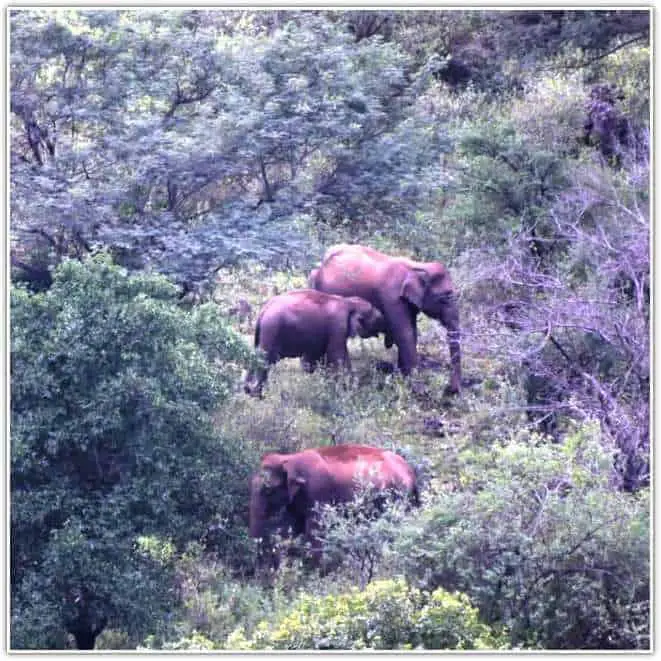
Hotel in Chinnar Wildlife Sanctuary
Davis Farm House is an excellent place to stay the night and explore the area. It’s only at a distance of 5 km from the sanctuary.
37. Gir National Park, Gujarat
Gir National Park is located in Gujarat.
Read Gir National Park in Gujarat is famous for which animal?
38. Bhadra Wildlife Sanctuary, Karnataka
Bhadra Wildlife Sanctuary and Tiger Reserve in India, previously known as the Jagara Valley Wildlife Sanctuary, Chikmagalur and Karnataka’s Shimoga district, was established in 1951. Read Bhadra Wildlife Sanctuary Timings, Entry Fee, Safari, Tour
39. Sultanpur National Park, Haryana
Sultanpur National Park, Gurgaon, is in Gurugram, Haryana, on Farukh Nagar road, established in 1972 and named after the Rajput king, Sultan Singh Chauhan. In July 1989, it was announced as a National Park.
Read Gurgaon Sultanpur Bird Sanctuary timings, entry fee
40. Betla National Park, Jharkhand
Betla Sanctuary, also called Palamau Tiger Reserve, is situated in Palamu and Latehar districts in Jharkhand.
Articles:-
- Where is Betla National Park? Address, Timings, Entry Fee
- Valki Machan Tour | Kolkata to Valkimachan Bardhaman West Bengal
- Alipore Zoological Garden Kolkata | Chiriakhana entry, timings, animals
- Chintamani Kar bird sanctuary
- Ballavpur Wildlife Sanctuary | Deer Park Bolpur West Bengal
Thanks for sharing this impressive blog. I really appreciate the work you have done, you explained everything in such an amazing and simple way.
Thanks Mr Gaurav